2024
AUSSER SICHT
Solo show
Thun Panorama
Thun Panorama
May 11 – Dec 1, 2024
Thun
Thun
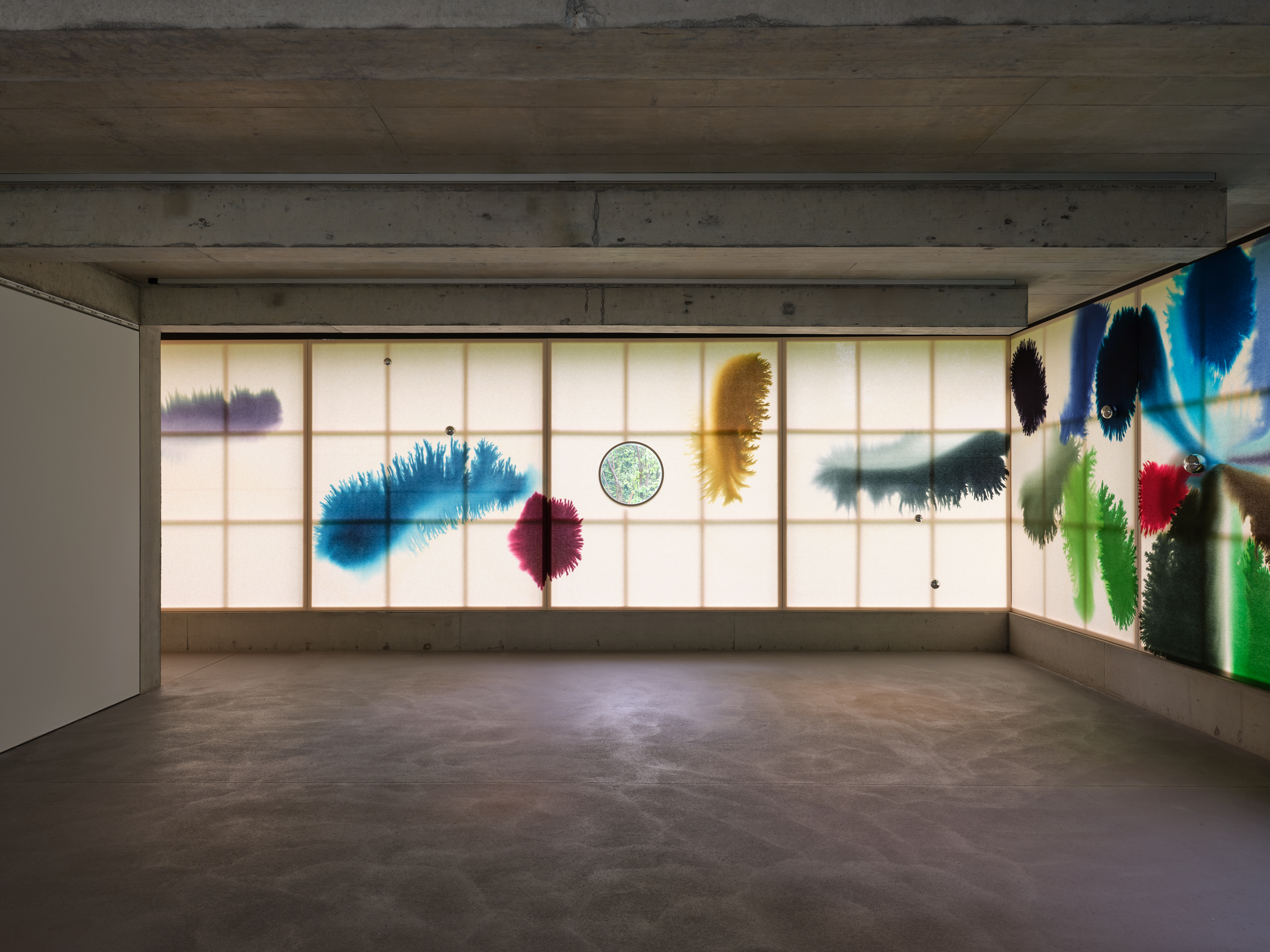
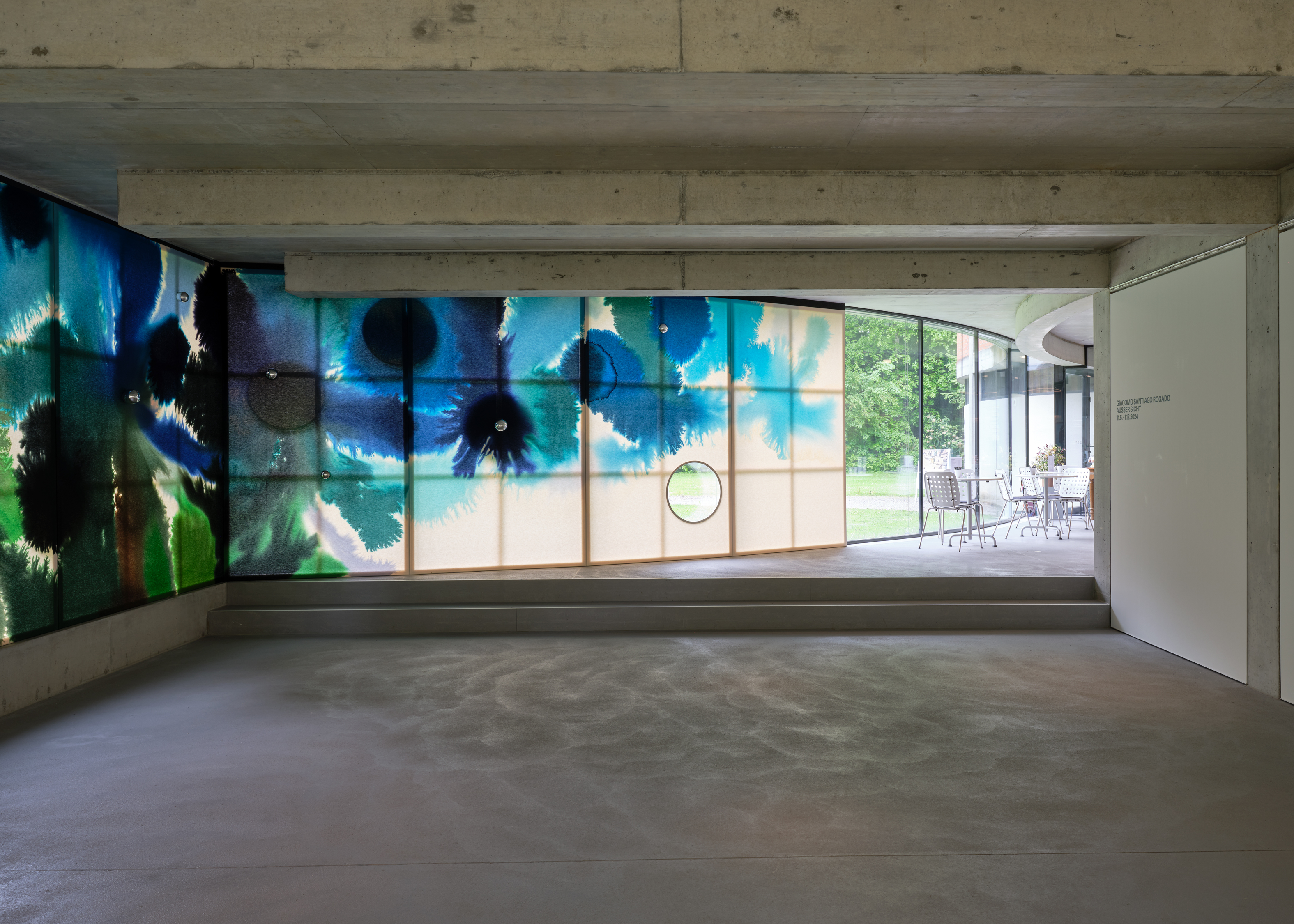
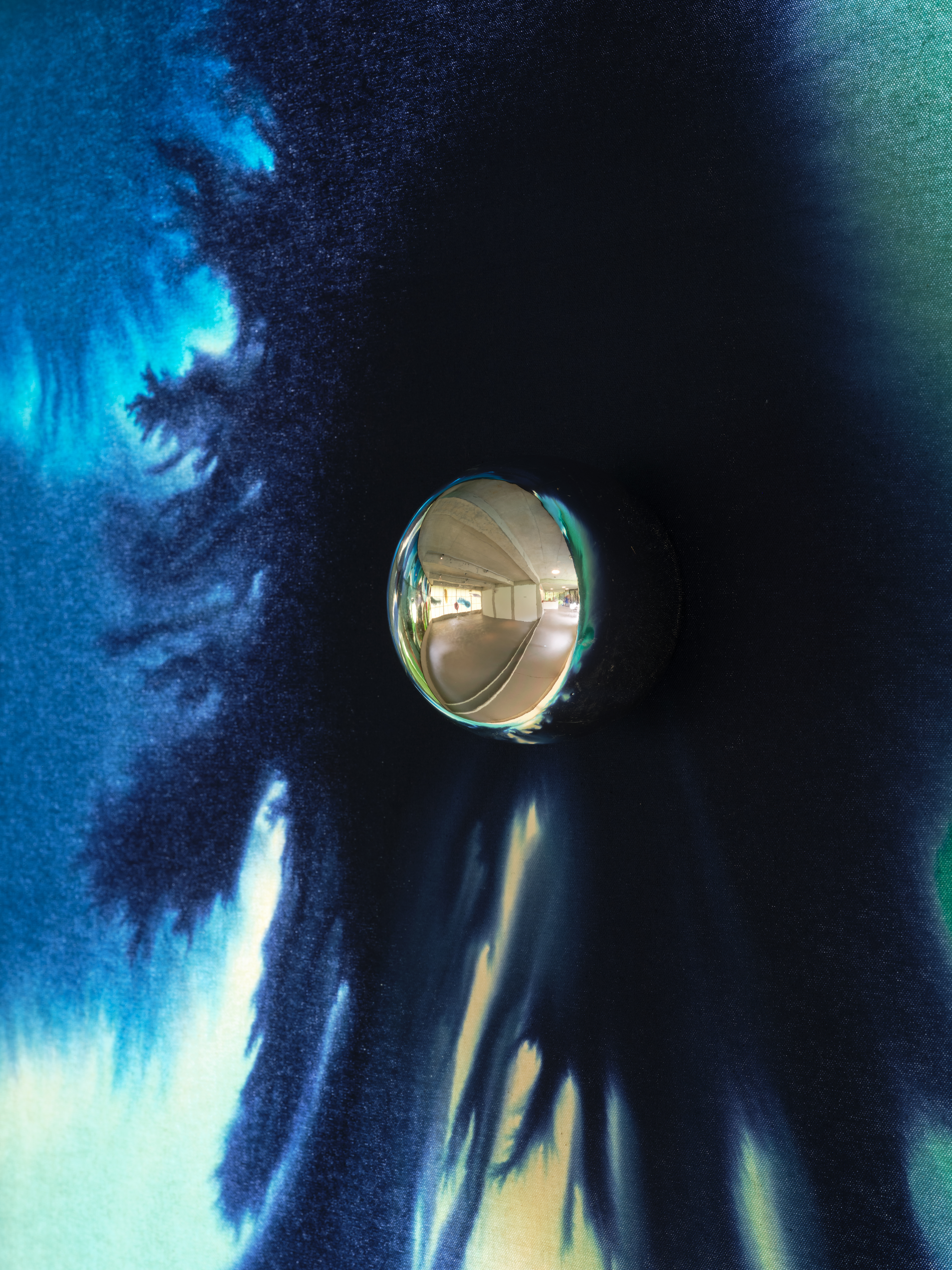
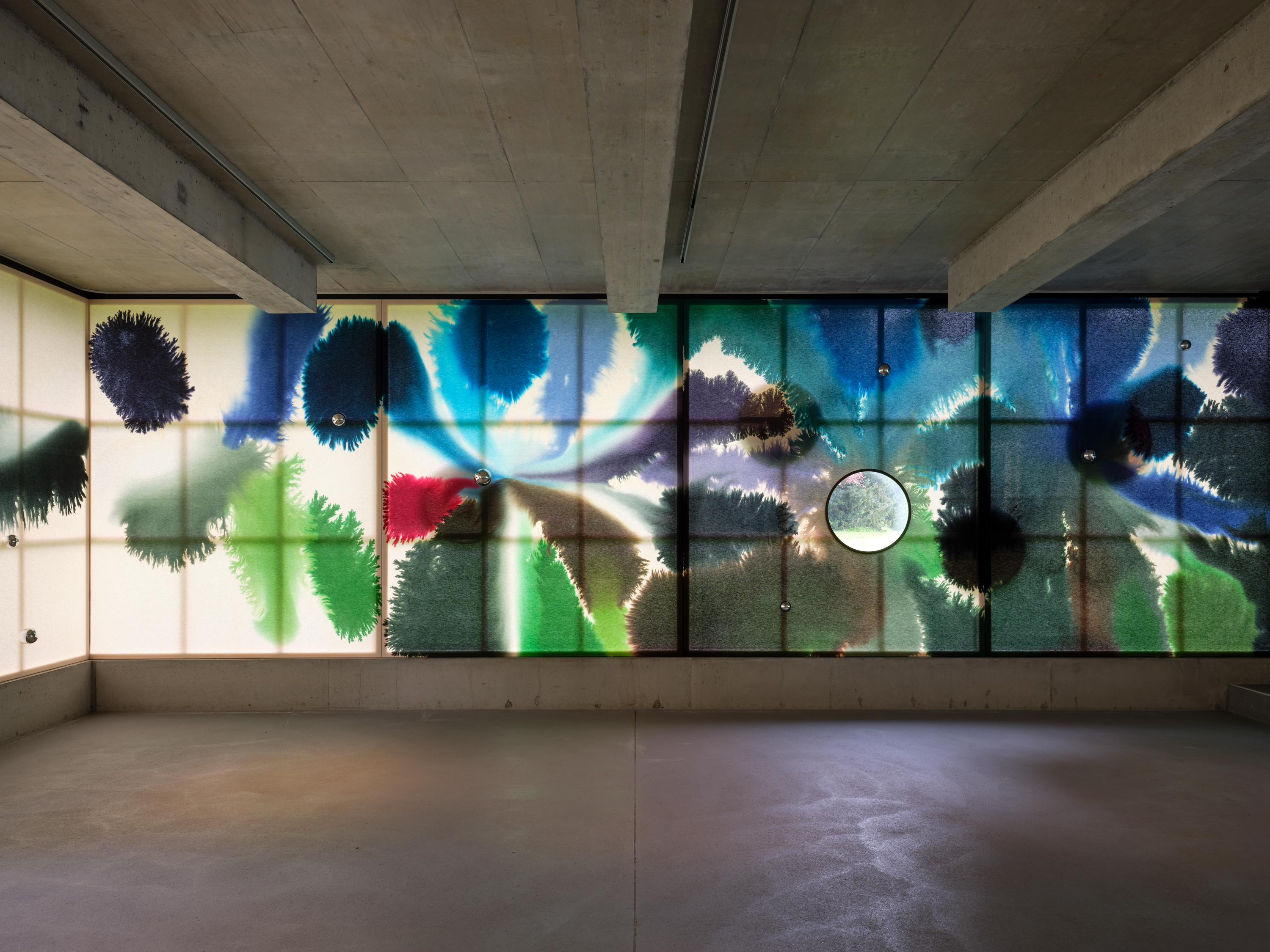
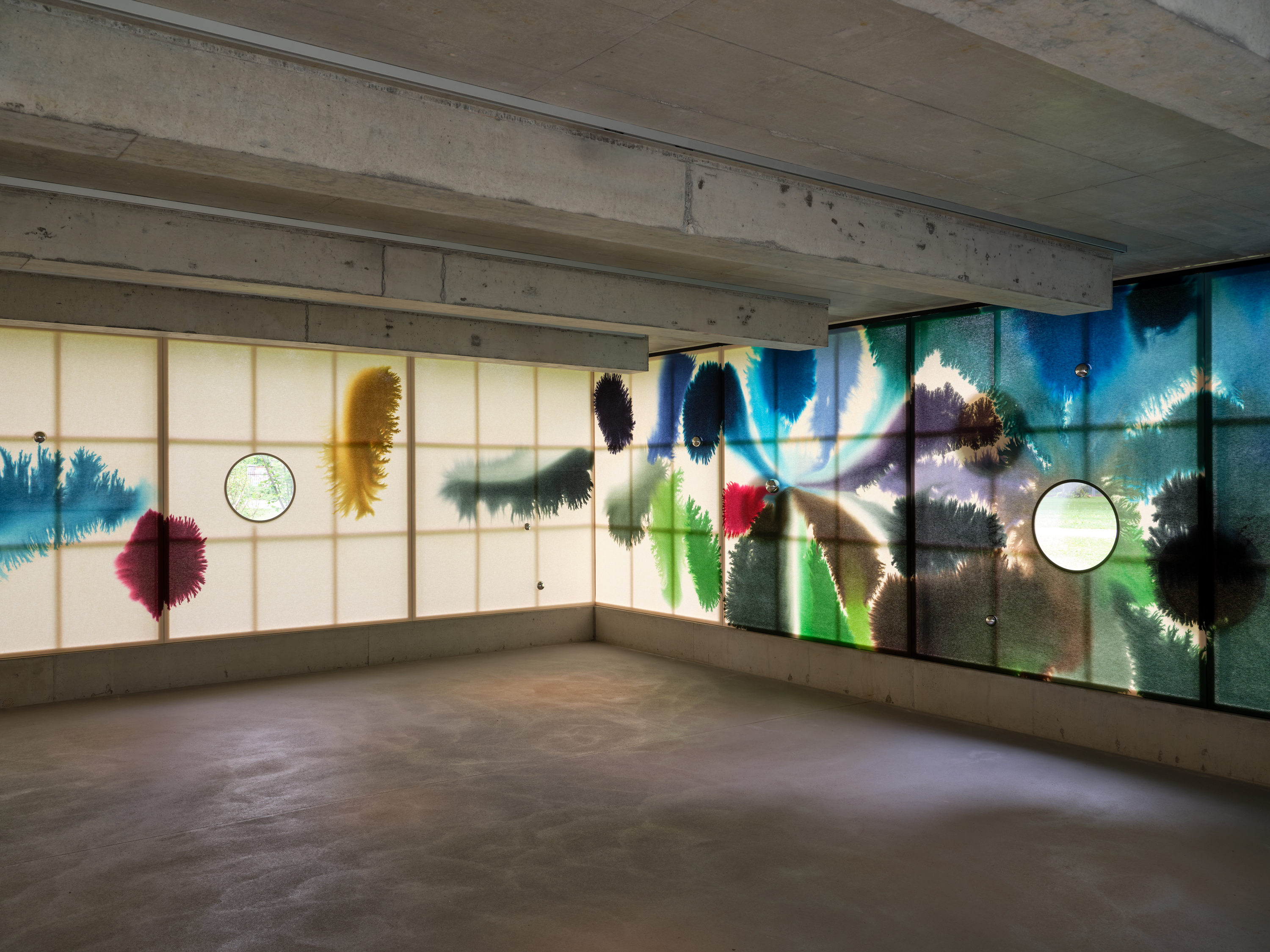
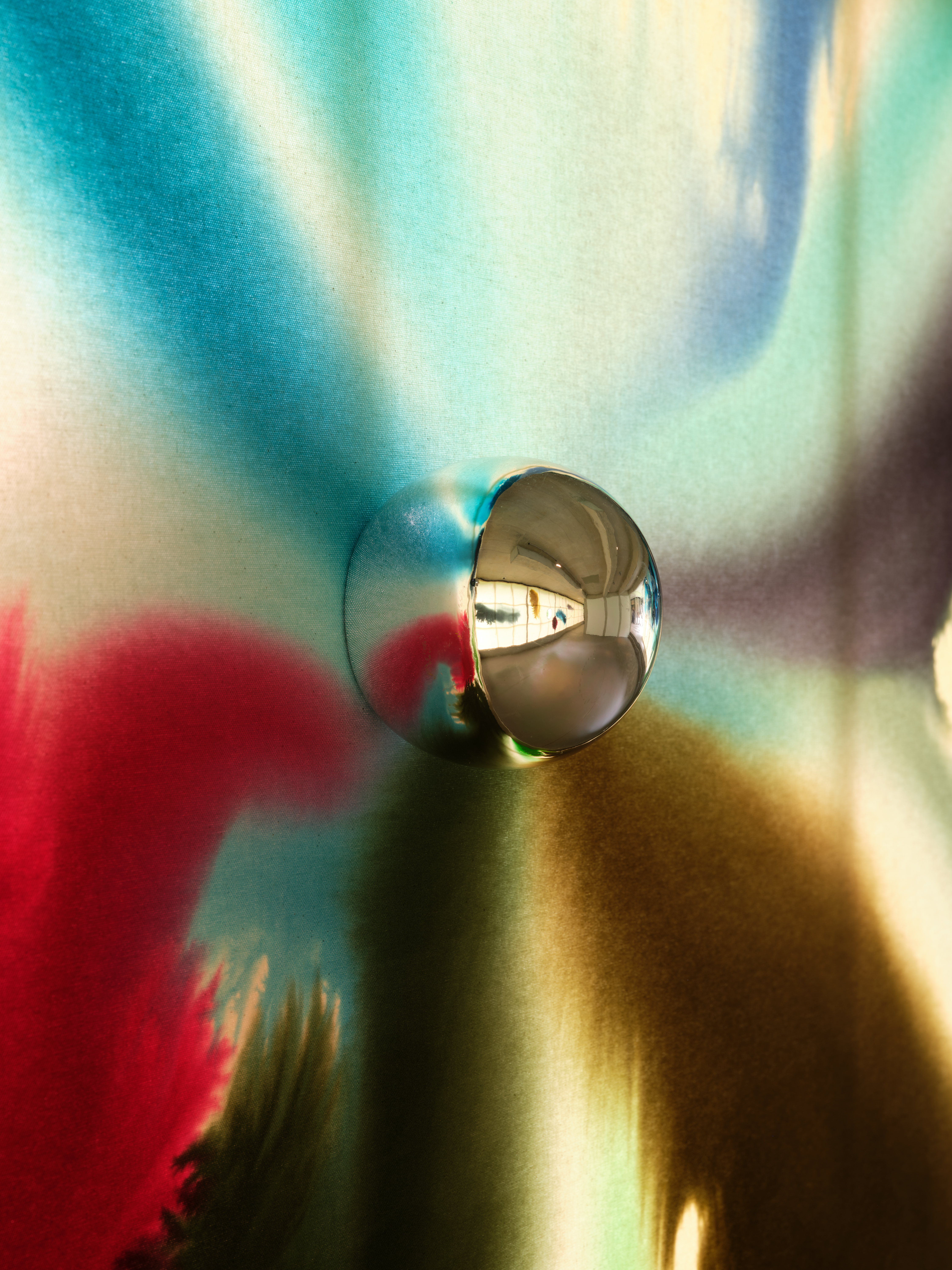
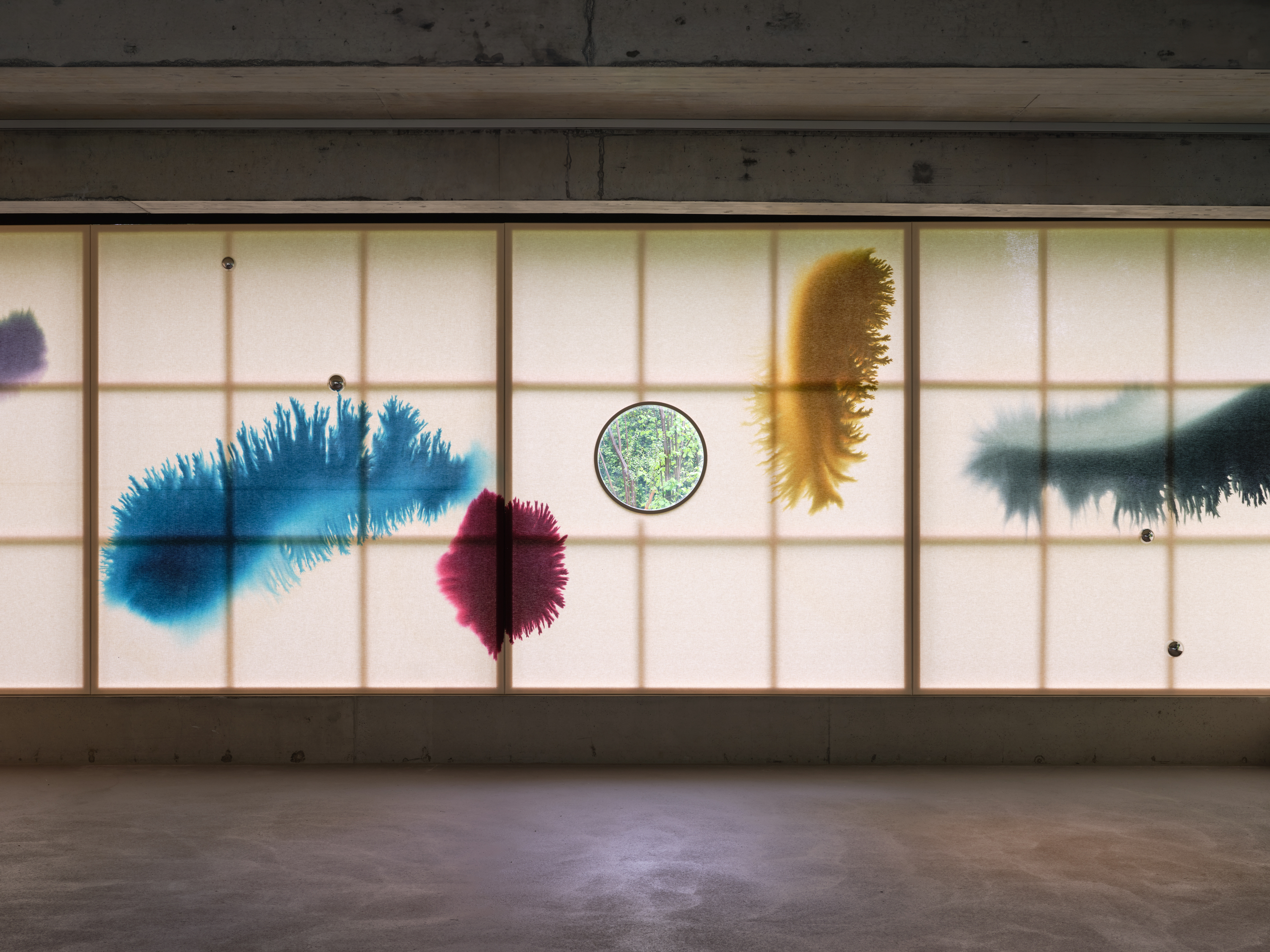
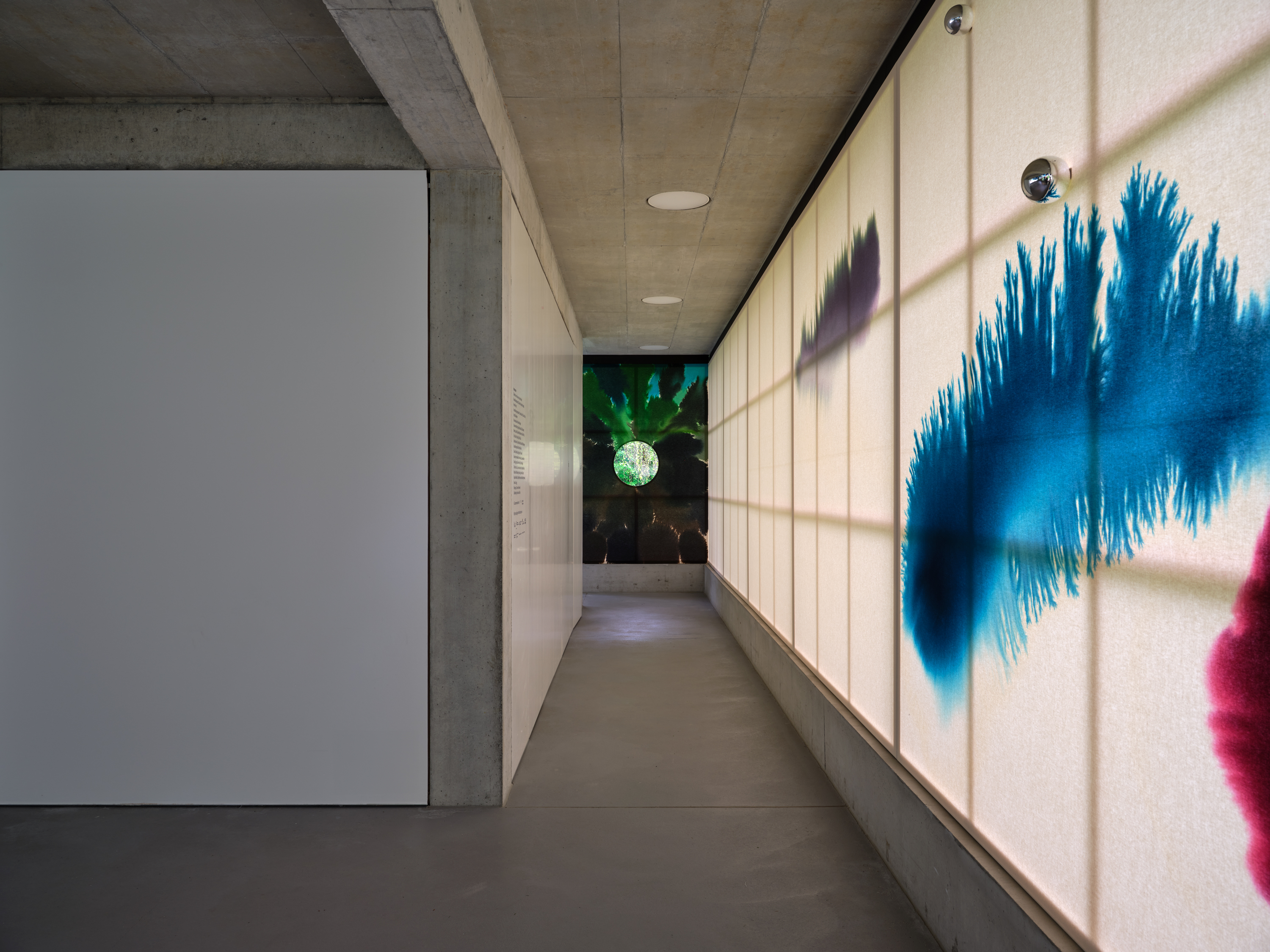
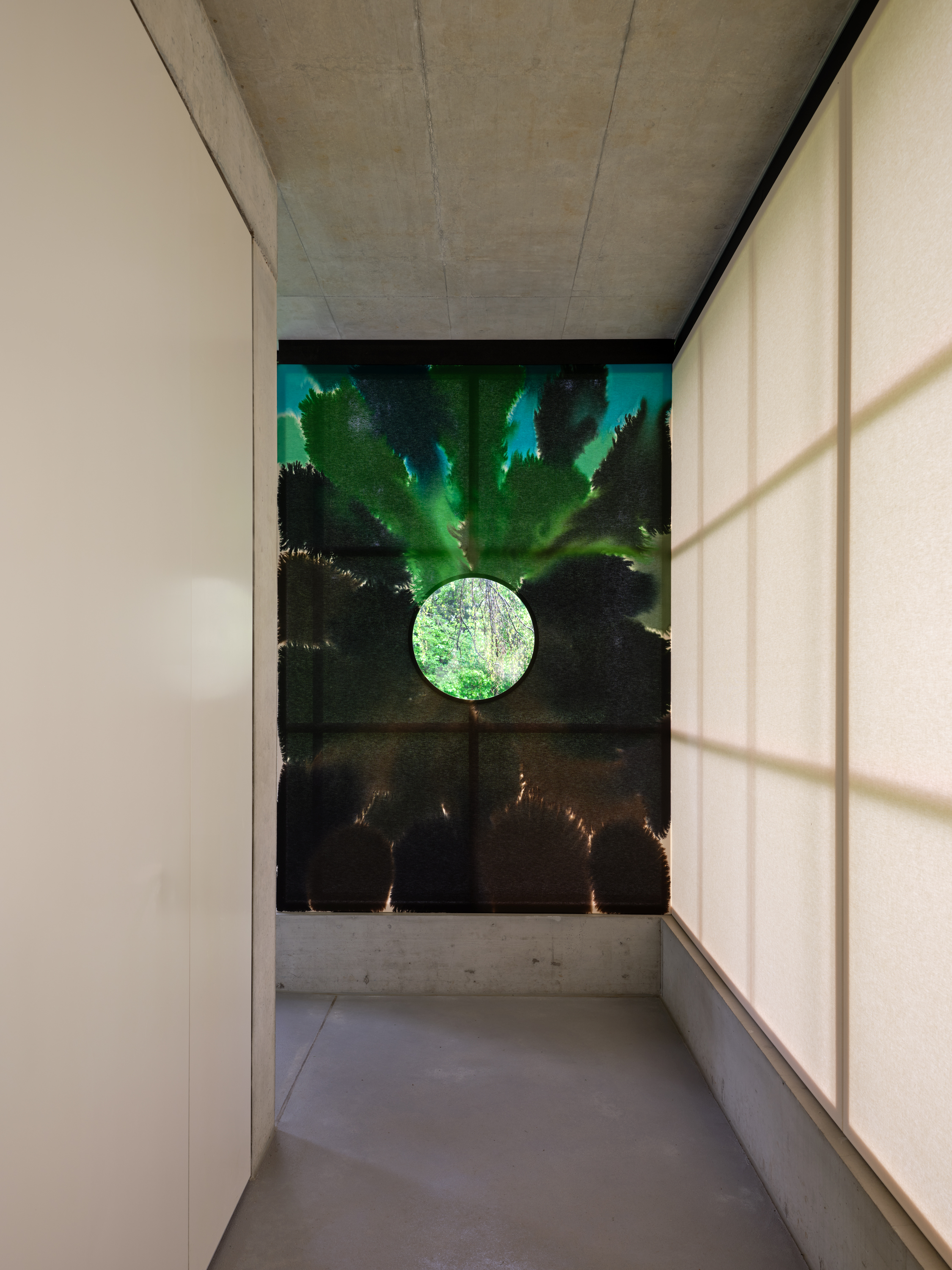
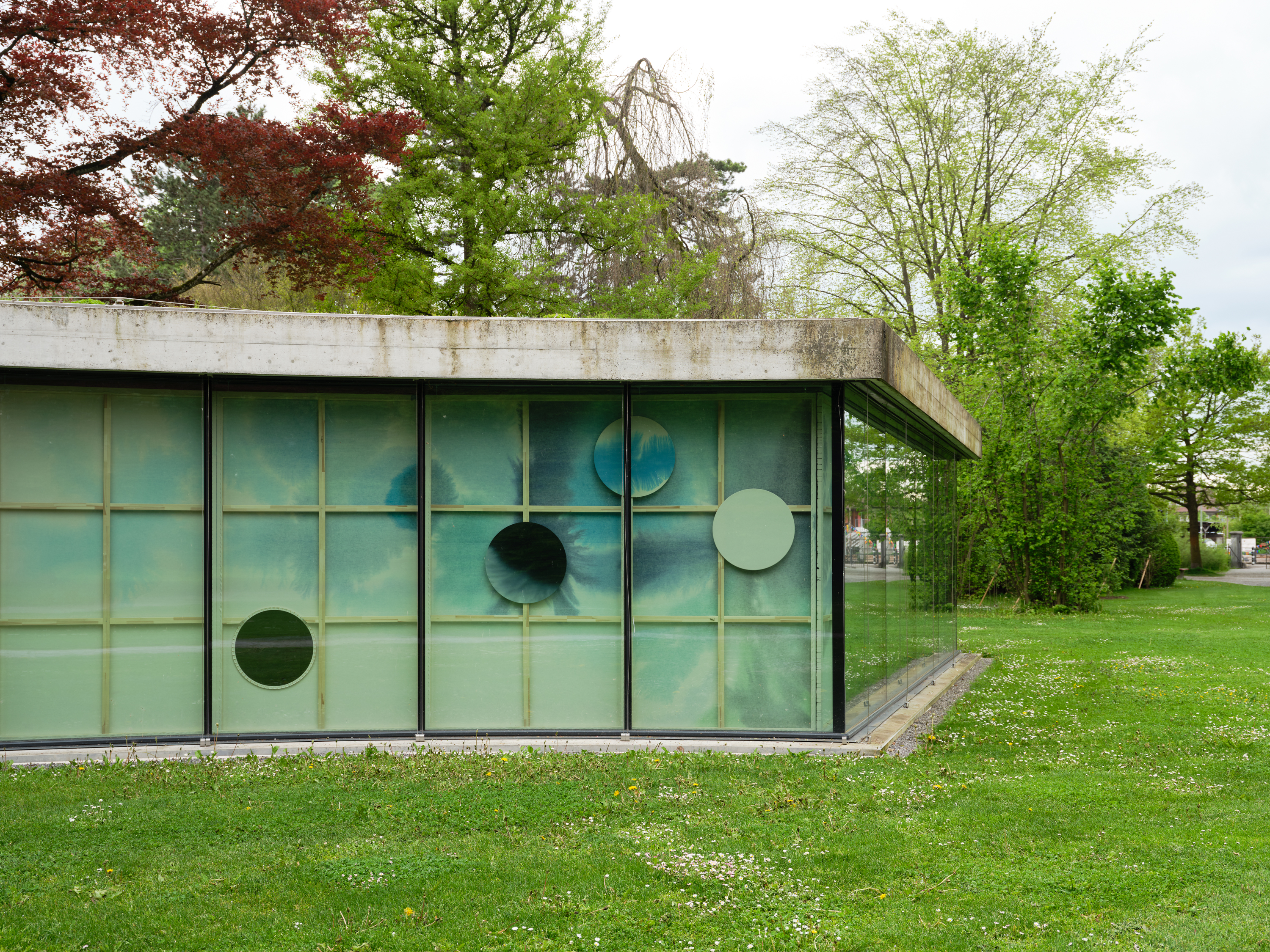
On their way to the building, visitors are already confronted with Rogado’s work as soon as they glimpse from the outside the backs of the large canvases blending harmoniously with the windows. The translucency of the picture supports hints at the nature of the painting to come. In addition, circular openings in the canvases afford a direct view into the exhibition space. In addition, round pictures hanging on the back of the canvases can be seenfrom the outside but only guessed at from inside. As windows into another dimension, they enhance the impression of depth and the complexity of the installation.
Upon arrival inside the exhibition space, the possibilities for interpreting the work multiply. The colours that the artist has applied to the canvases create shimmering organic forms that open up a view inwards and – thanks to the light coming in from outside and the semi-transparent picture supports – also outwards. The daylight makes the silhouettes of the stretcher frames and the small round paintings attached to the back show through the canvases. These elements blend with the shadows cast by the trees and plants to become part of the work and its composition. Ausser Sicht is therefore constantly in motion, transforming with changes in nature and the seasons.
Upon arrival inside the exhibition space, the possibilities for interpreting the work multiply. The colours that the artist has applied to the canvases create shimmering organic forms that open up a view inwards and – thanks to the light coming in from outside and the semi-transparent picture supports – also outwards. The daylight makes the silhouettes of the stretcher frames and the small round paintings attached to the back show through the canvases. These elements blend with the shadows cast by the trees and plants to become part of the work and its composition. Ausser Sicht is therefore constantly in motion, transforming with changes in nature and the seasons.
The four circular openings, which are positioned in the installation in the direction of the four points of the compass, act like windows that open up the picture even further to offer a complete view of the outside world and project it outwards. Rather than blocking the view, the canvases thus open up a horizon of infinite possibilities. The artist has furthermore placed on them painted ceramic spheres with reflective enamel surfaces, creating a kaleidoscope of reflected images. Viewers can also see themselves reflected in these orbs and become in this way part of the installation. This panora- ma of visions and illusions not only explores the nature of art but also probes the limits of human perception.
In sum, Ausser Sicht generates a continuous and complex connection between interior and exterior space that can be experienced from both perspectives. The windows of the gallery become fragmented openings providing surprising views inside and out that challenge our perceptual habits. The title Ausser Sicht refers to the fact that some- thing always remains hidden from view and eludes our gaze, no matter how we look at things.
Chiara Ottavi
In sum, Ausser Sicht generates a continuous and complex connection between interior and exterior space that can be experienced from both perspectives. The windows of the gallery become fragmented openings providing surprising views inside and out that challenge our perceptual habits. The title Ausser Sicht refers to the fact that some- thing always remains hidden from view and eludes our gaze, no matter how we look at things.
Chiara Ottavi
2023
Concerto Finale, Regionale
Group show
Kunsthaus Baselland
Kunsthaus Baselland
Nov 26 – Jan 8, 2024
Basel
Basel
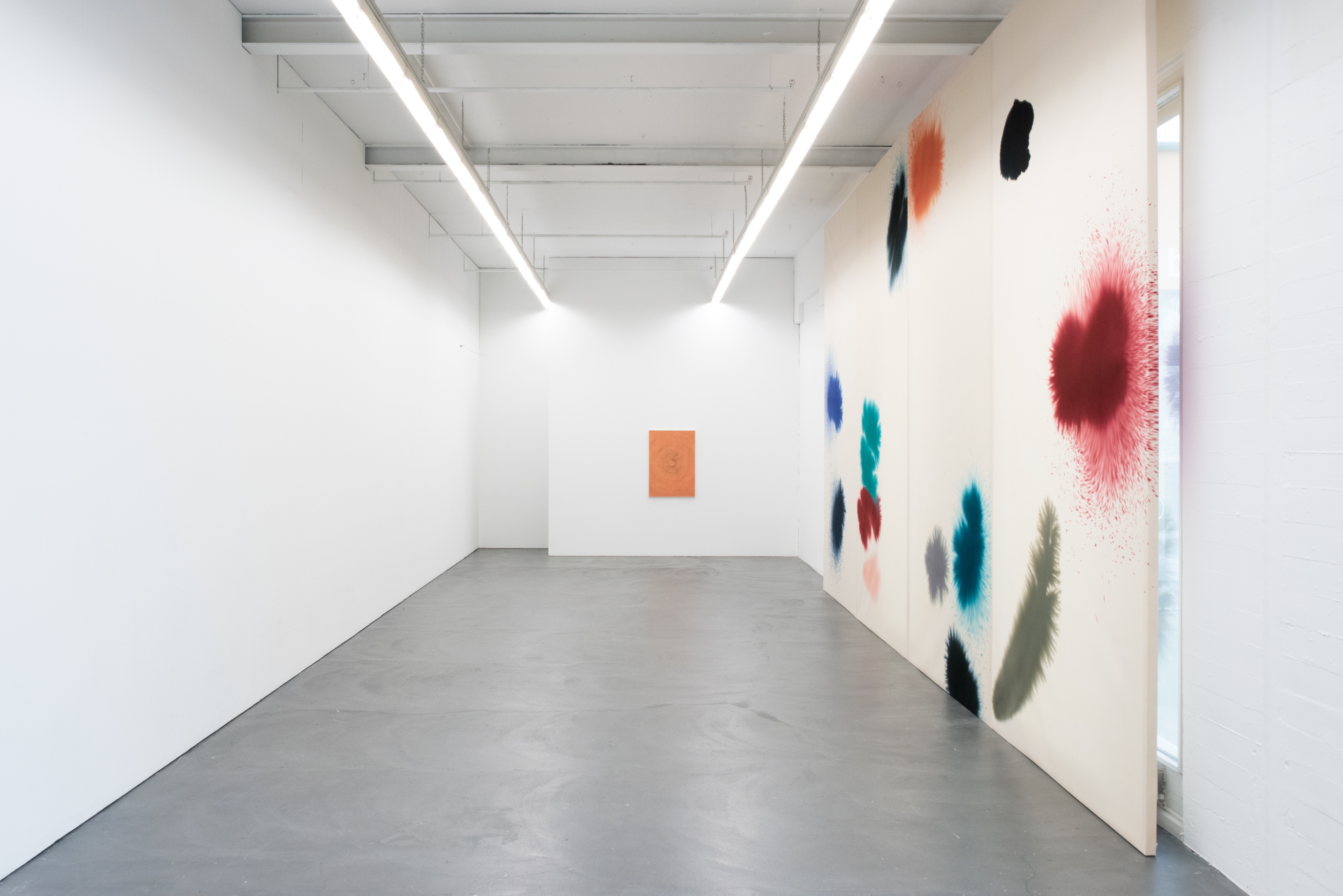
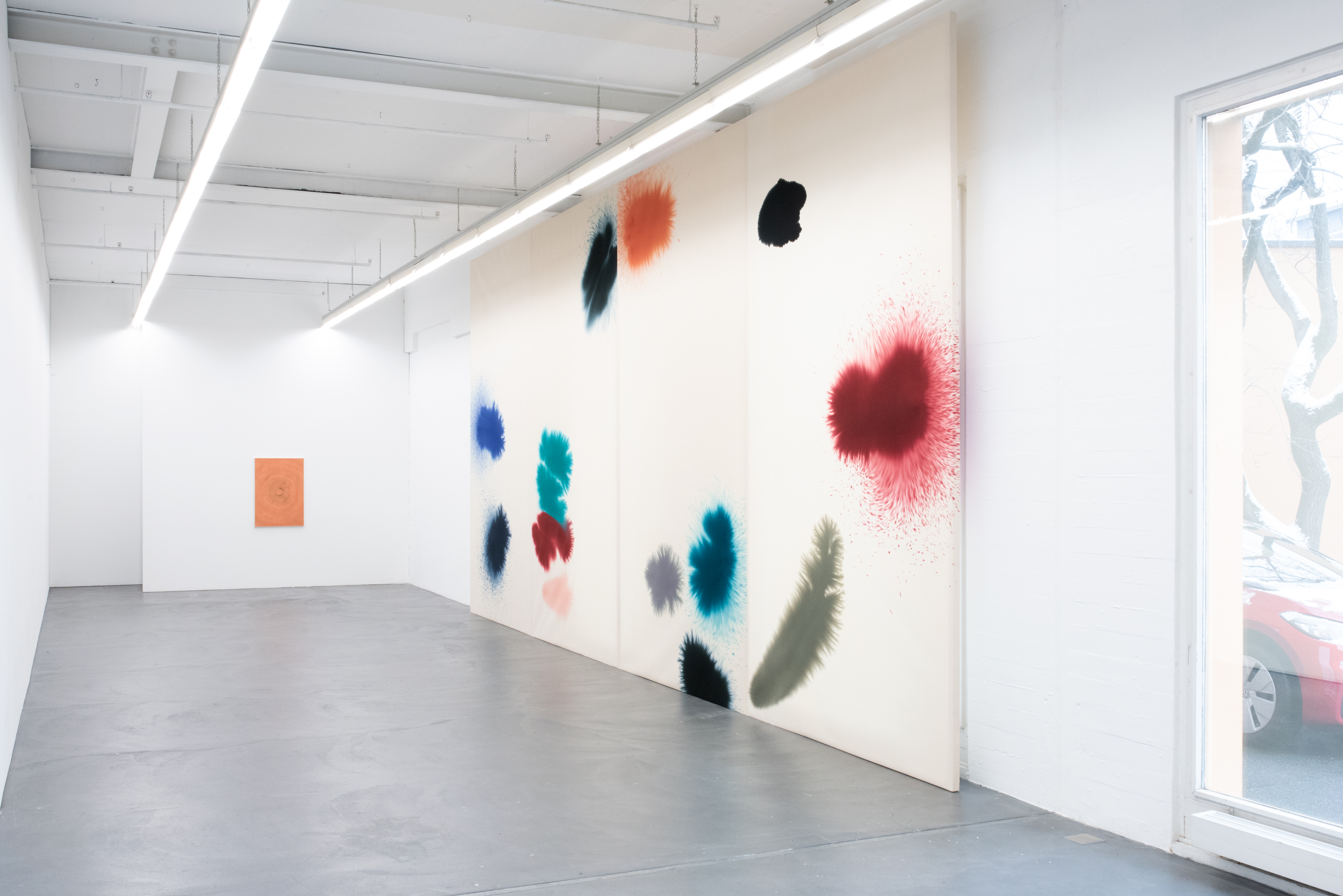
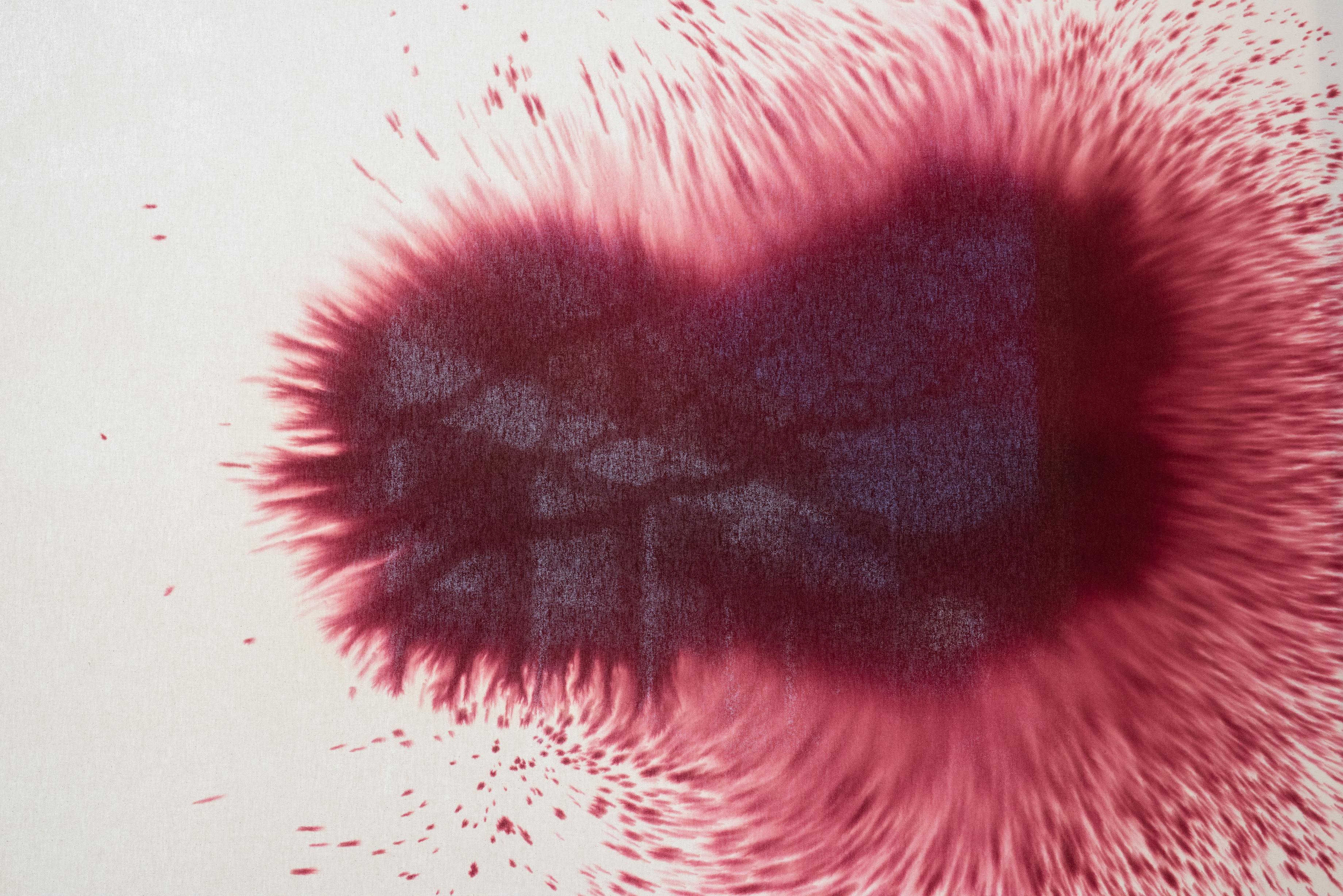
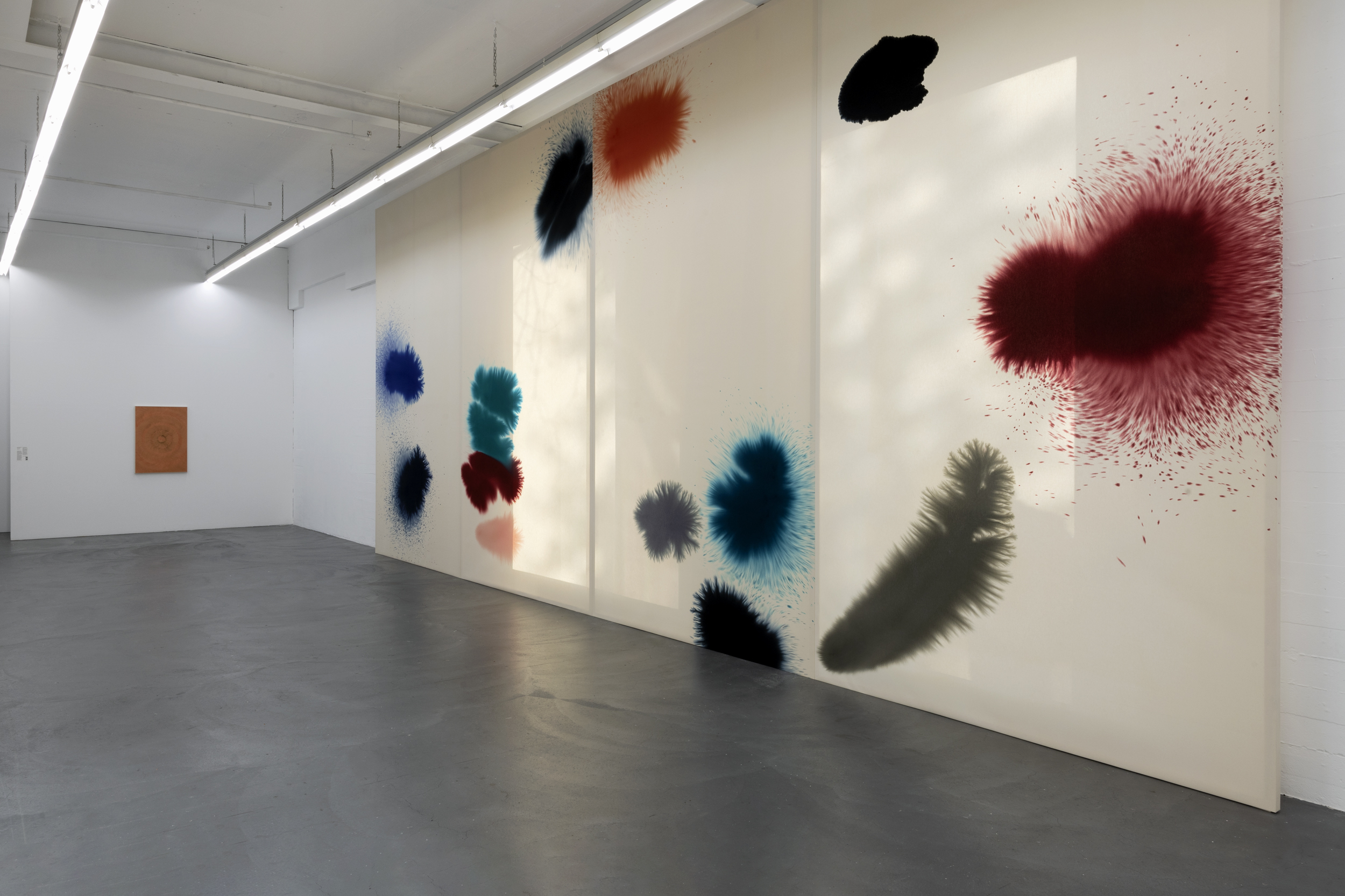
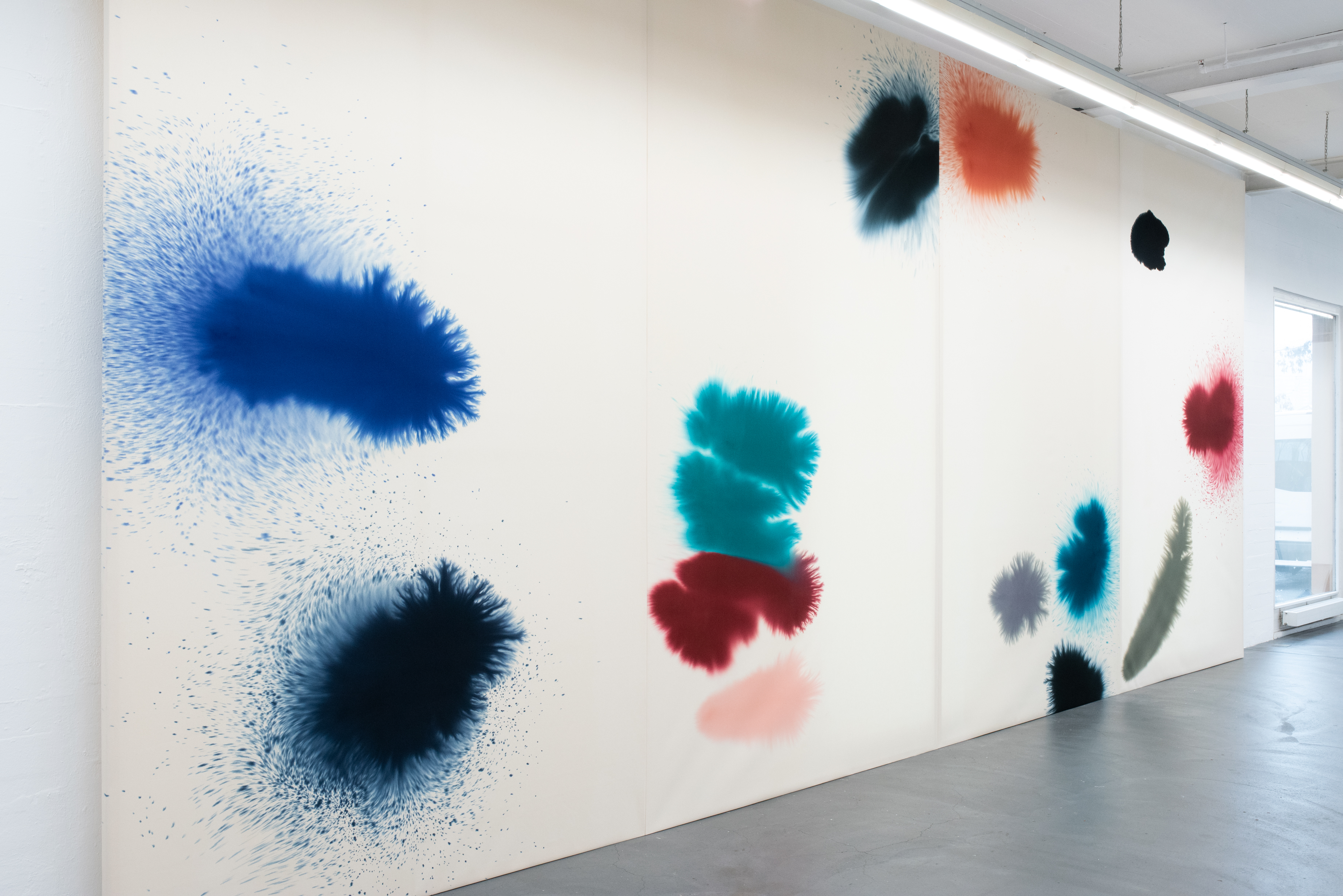
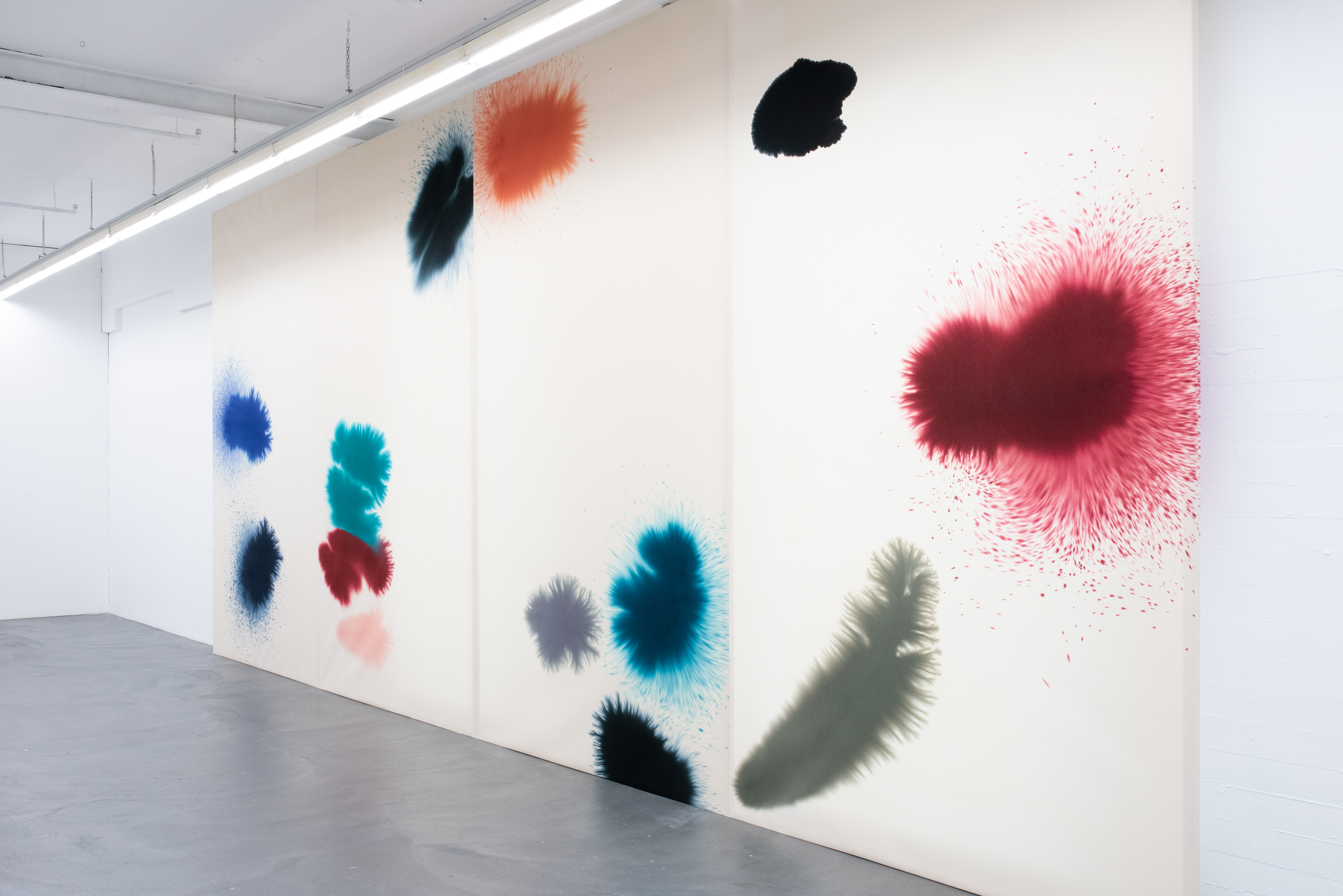
Die Bildsprache von Giacomo Santiago Rogado ist frei von raumzeitlichen Koordinaten und erkennbaren Objekten. Seine Werke, meist installativ realisierte Gemälde, zeigen evokative Formen, die als Partikel, Flüssigkeiten, elementare Lebensformen oder Planeten, Sterne oder Galaxien erscheinen. Es entsteht ein Gefühl von Widersprüchlichkeit und Transparenz, von Durchdringung und Überschneidung, von Konsonanz und Resonanz.
«Das Überflüssige weglassen, um das Wesentliche zu finden» – das ist das poetische Credo, das Rogado uns vor Augen führt. Analog dazu tut Rogado beim Malen nichts anderes als «einfach nur malen». Es gibt keine Vorüberlegungen, kein Projekt und kein vorgefertigtes Wissen, die Praxis wird mit Ausgeglichenheit und Ausdauer als eine paradoxerweise blinde Übung des Malens ausgeführt. In seinem Werk Room for Intuitionüberträgt er den Akt des Malens in Teilen auf dieMaterialien seiner Arbeiten. Es handelt sich um eigenständige Arbeiten, in denen sich seine selbst entwickelten Techniken vermischen und neuartige
«Das Überflüssige weglassen, um das Wesentliche zu finden» – das ist das poetische Credo, das Rogado uns vor Augen führt. Analog dazu tut Rogado beim Malen nichts anderes als «einfach nur malen». Es gibt keine Vorüberlegungen, kein Projekt und kein vorgefertigtes Wissen, die Praxis wird mit Ausgeglichenheit und Ausdauer als eine paradoxerweise blinde Übung des Malens ausgeführt. In seinem Werk Room for Intuitionüberträgt er den Akt des Malens in Teilen auf dieMaterialien seiner Arbeiten. Es handelt sich um eigenständige Arbeiten, in denen sich seine selbst entwickelten Techniken vermischen und neuartige
Malereikombinationen generieren. Die mit Farbbädern in einem Zusammenspiel von Zufall und Komposition geschaffenen Werke beeindrucken durch ihre unmittelbare Wirkung. Die Baumwolltücher saugen in einem langsamen Trocknungsprozess die Farben auf, die der Künstler in Behälter hineintröpfelt. Die Tropfen blühen auf den Stoffen zu prächtigen bunten Formen aus. Das Arbeiten ist ein Dialog zwischen Impulsgeben, Beobachten, Entstehen und Reagieren.
Giacomo Santiago Rogado geht bei seinen Arbeiten äusserst einfühlsam mit Licht und Raum um. Dieses Interesse spiegelt sich nicht nur in seinen Gemälden, sondern auch in deren reflektierten Platzierung. Affektiv, mediativ, kontemplativ – so lässt sich das Betrachten mit dem Werk von Giacomo Rogado beschreiben, und es ist zugleich ein Erfassen des eigenen Seins im Raum.
Meryl Kureekal
Giacomo Santiago Rogado geht bei seinen Arbeiten äusserst einfühlsam mit Licht und Raum um. Dieses Interesse spiegelt sich nicht nur in seinen Gemälden, sondern auch in deren reflektierten Platzierung. Affektiv, mediativ, kontemplativ – so lässt sich das Betrachten mit dem Werk von Giacomo Rogado beschreiben, und es ist zugleich ein Erfassen des eigenen Seins im Raum.
Meryl Kureekal
2021
constant change
Solo show
Kunsthalle
Kunsthalle
21/8 – 3/9/21
Luzern
Luzern
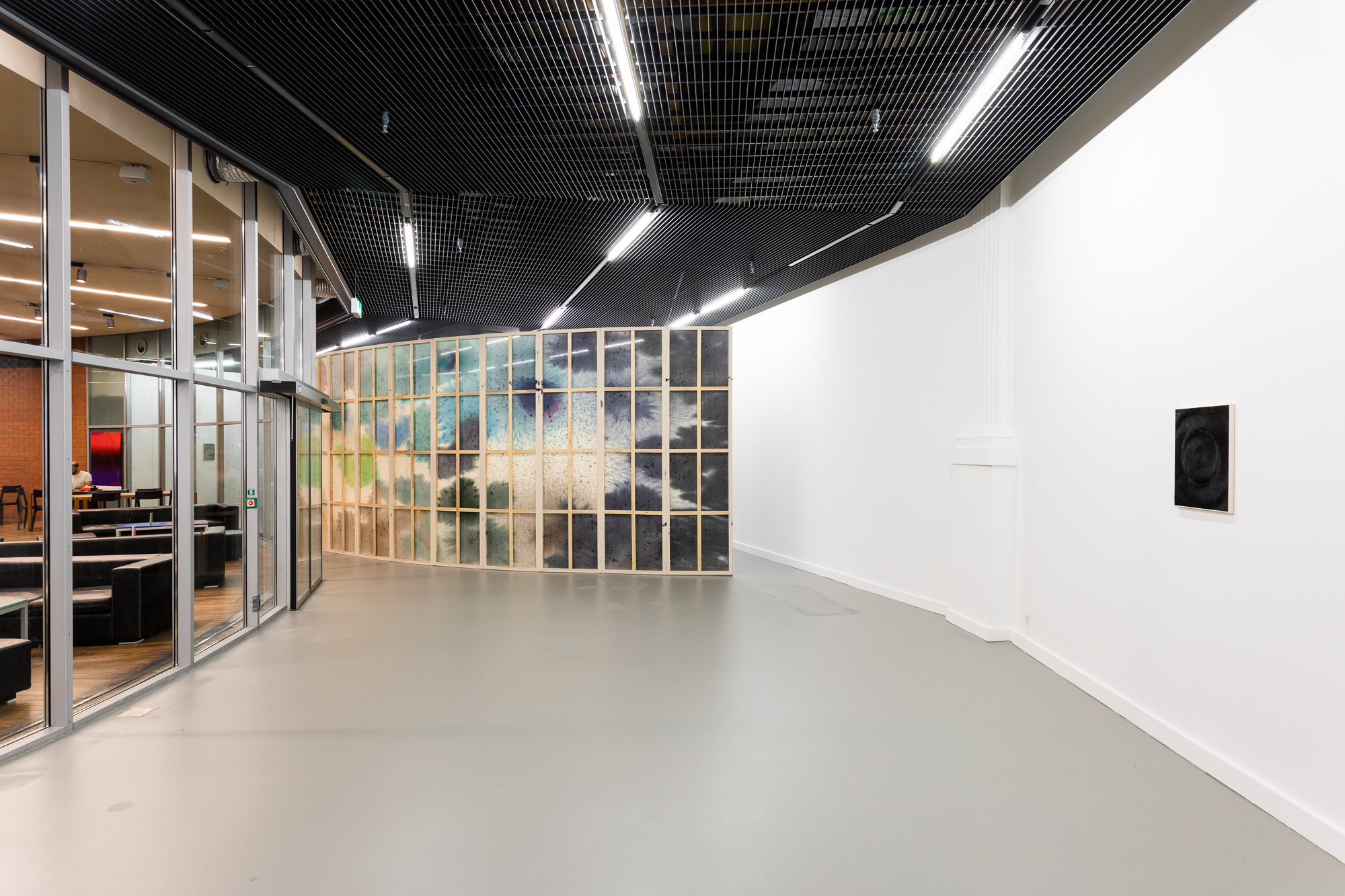
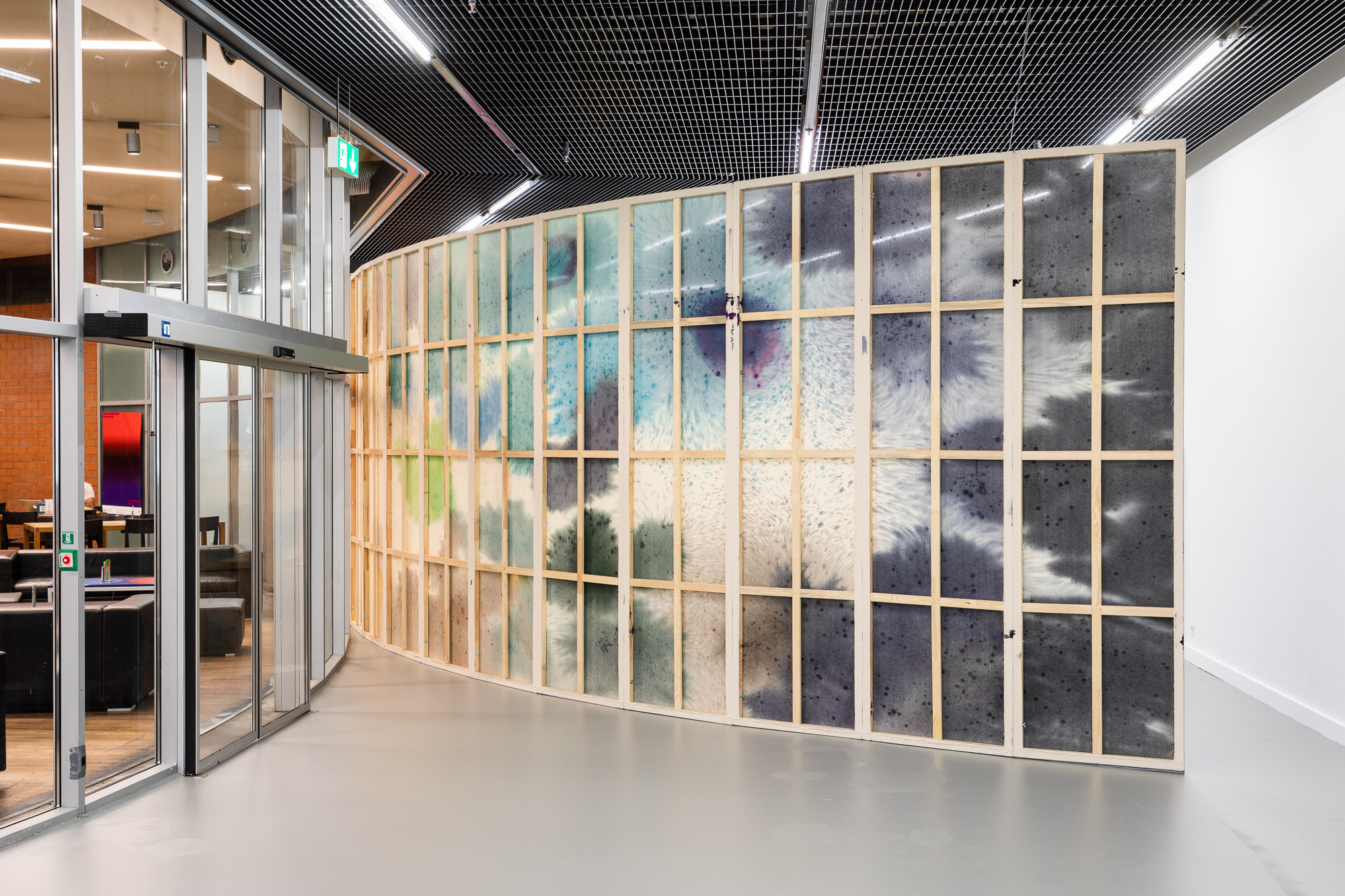
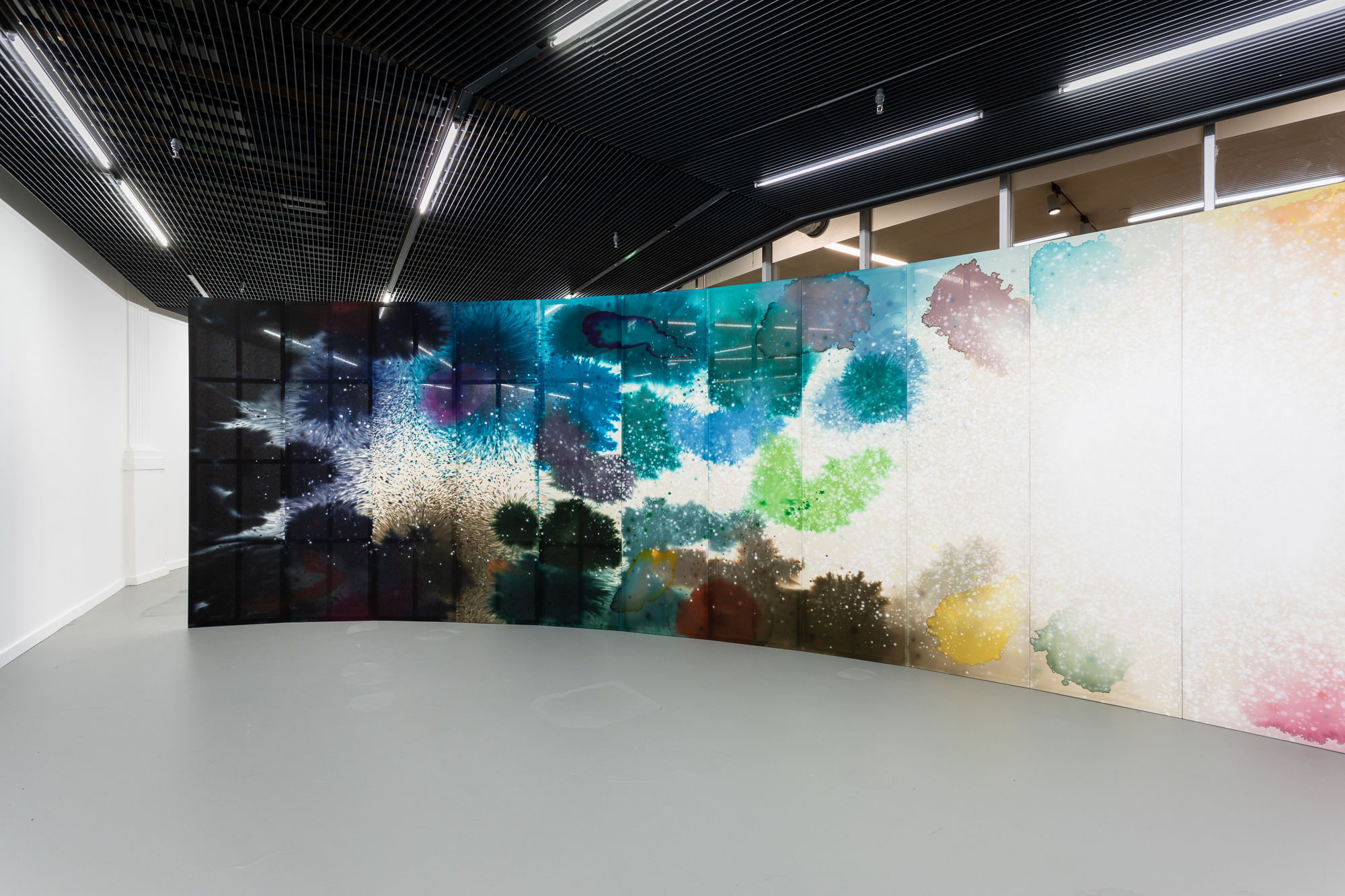
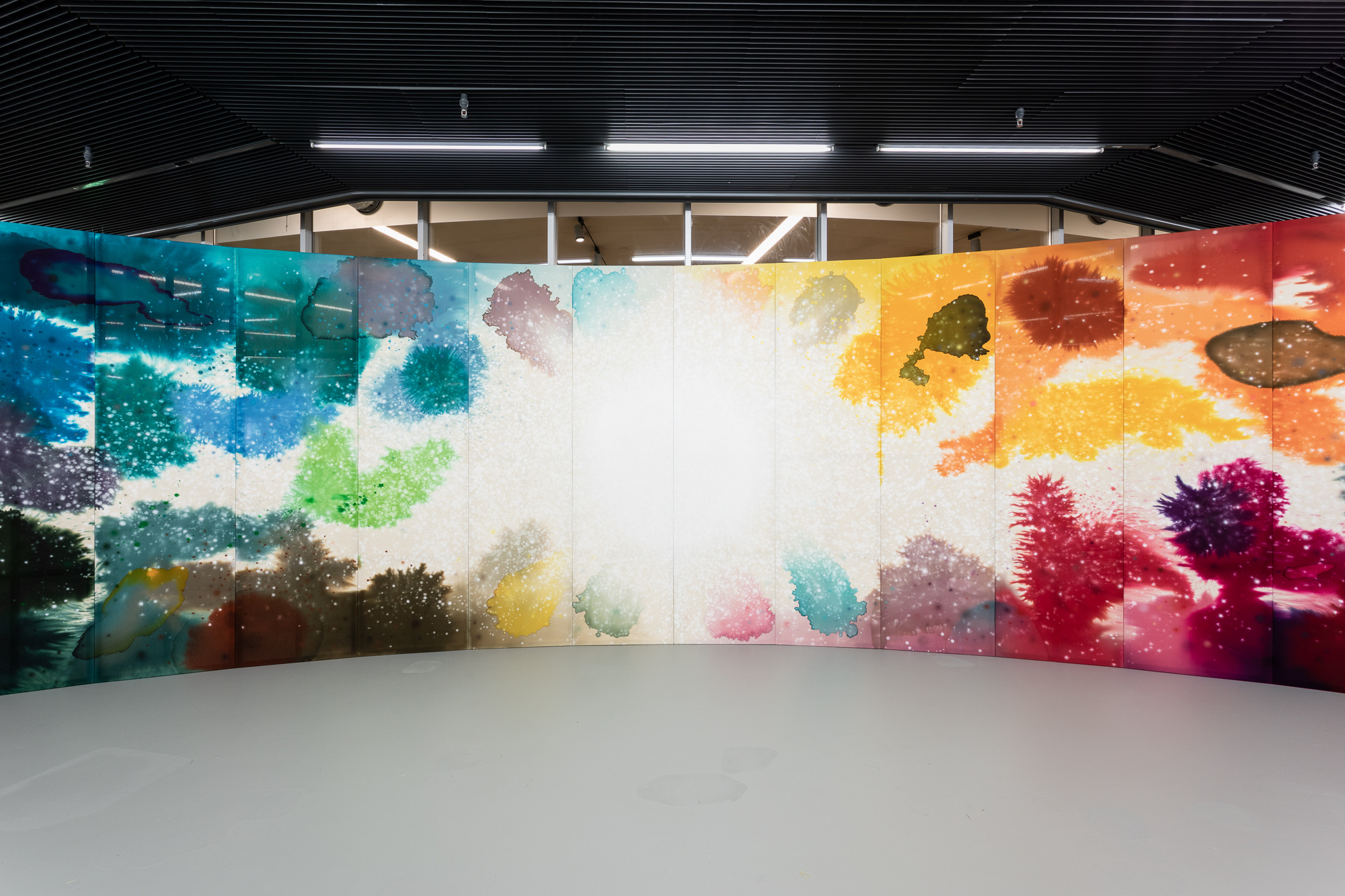
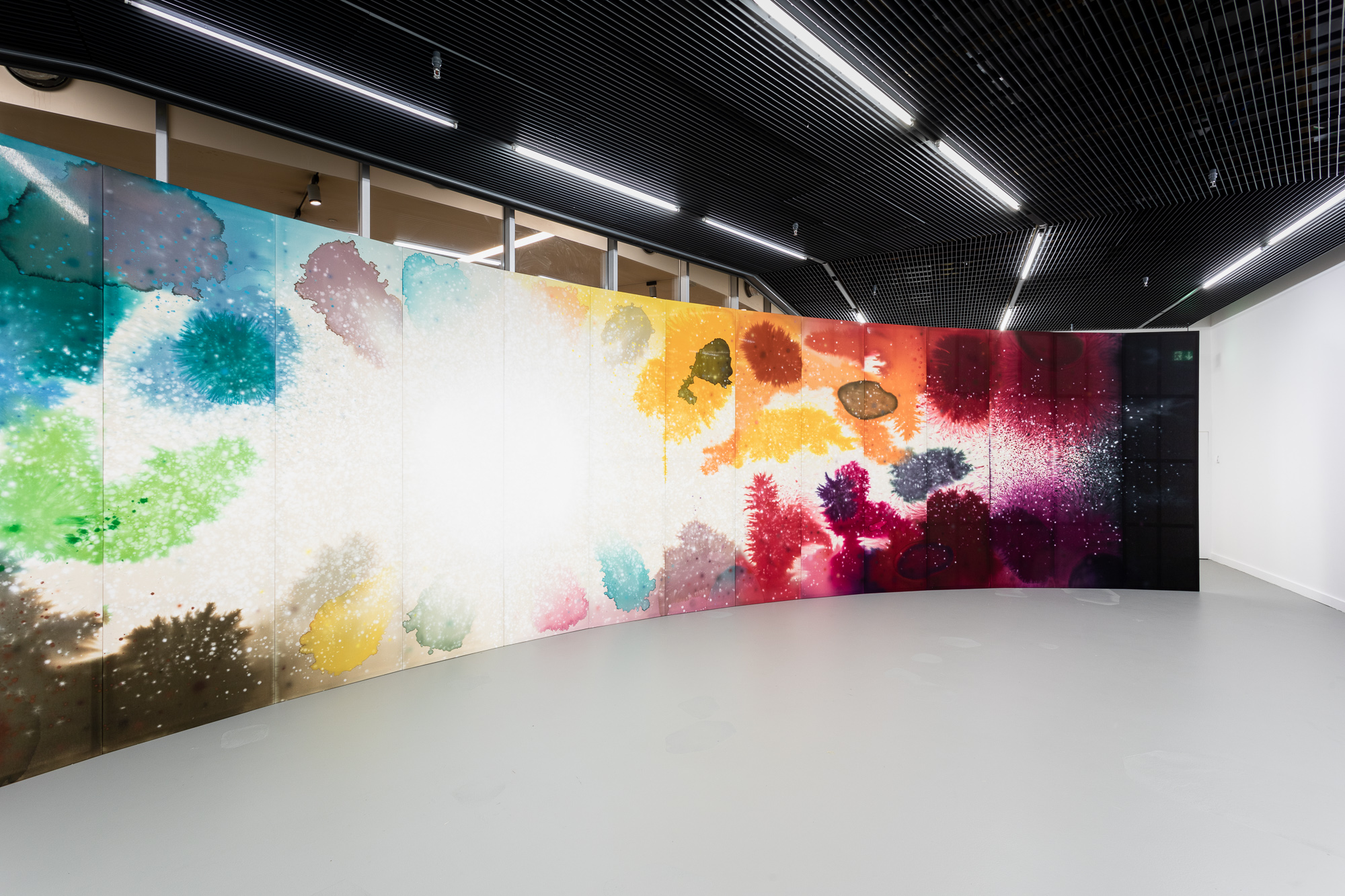
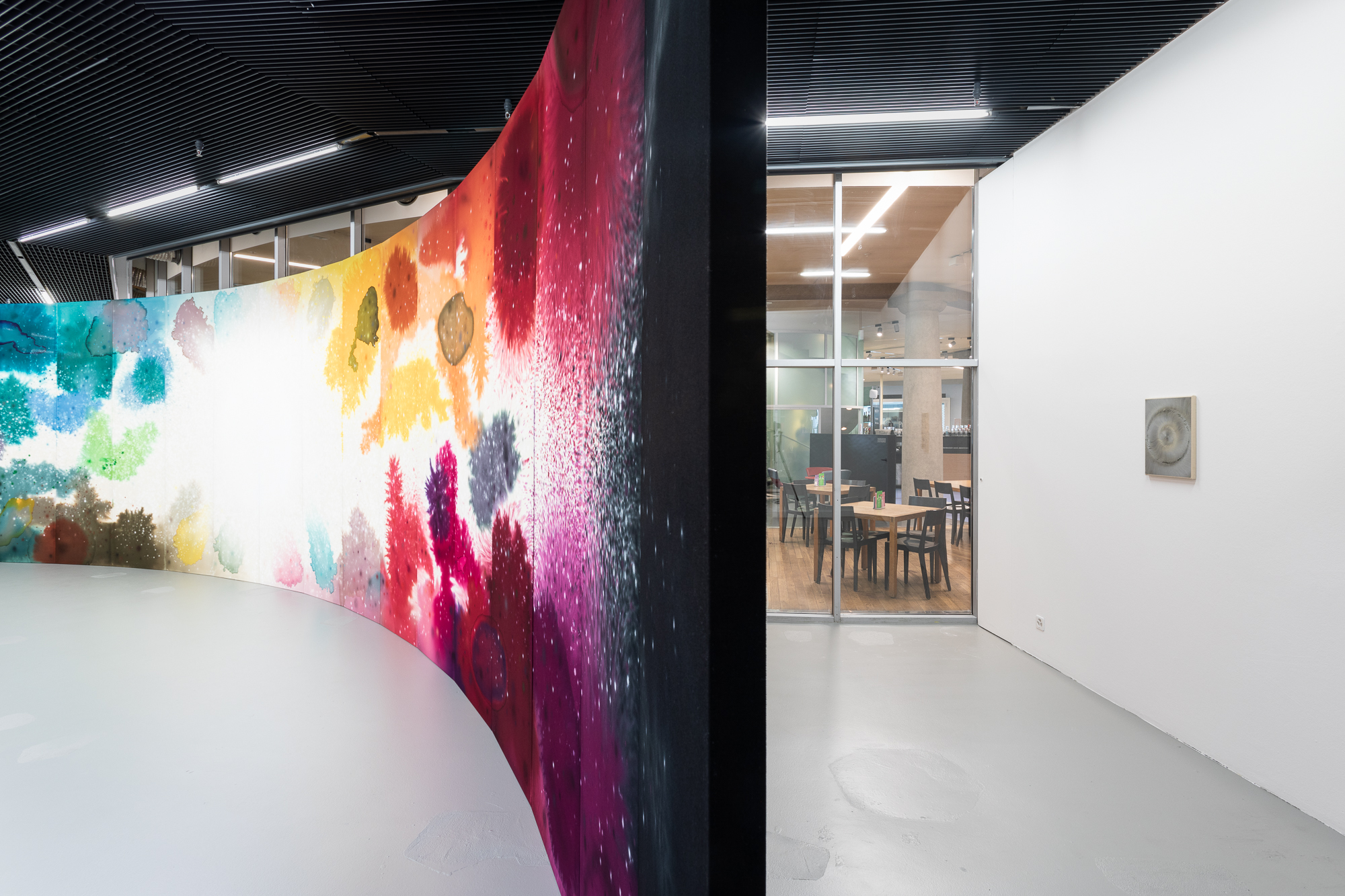
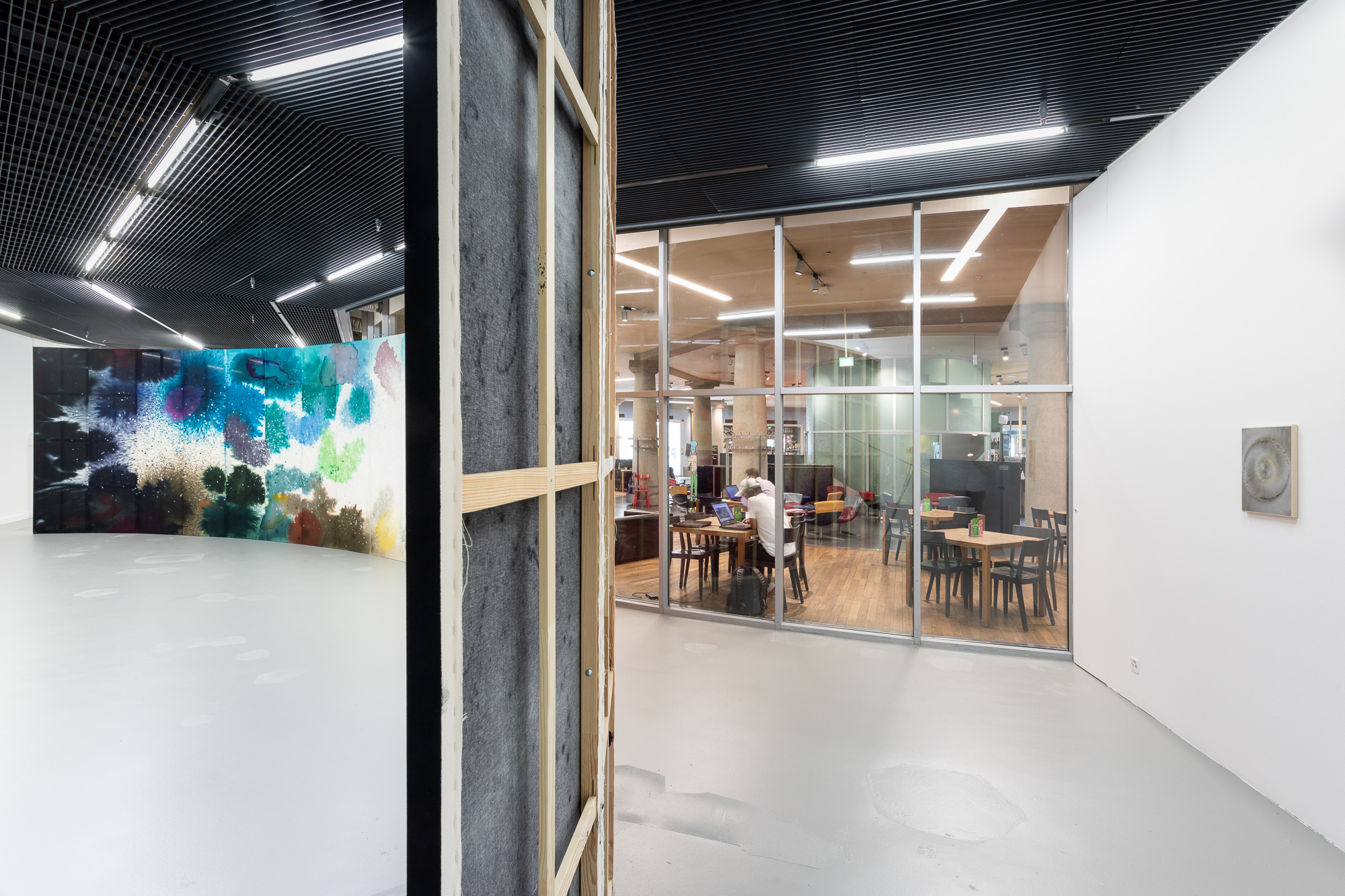
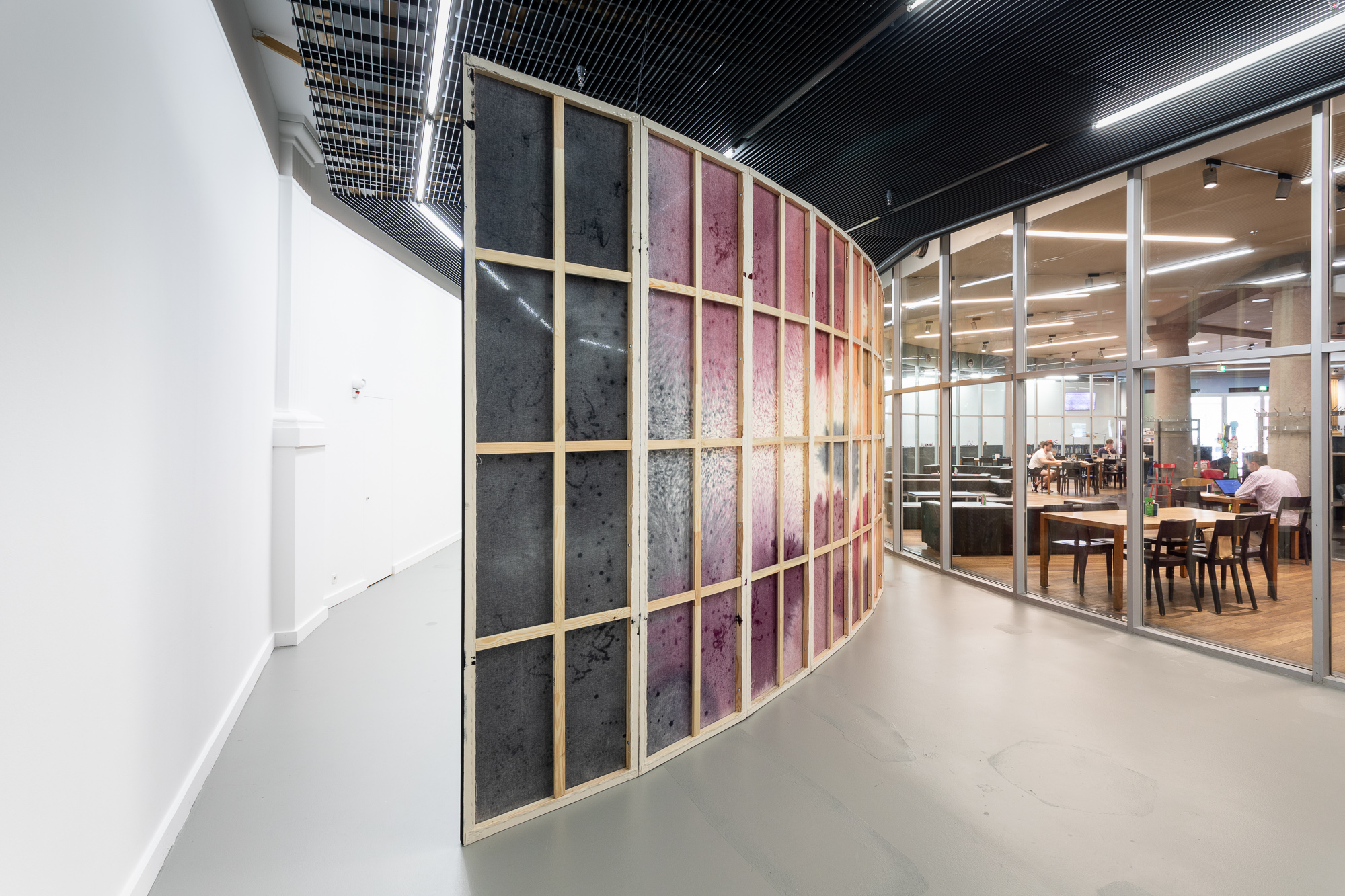
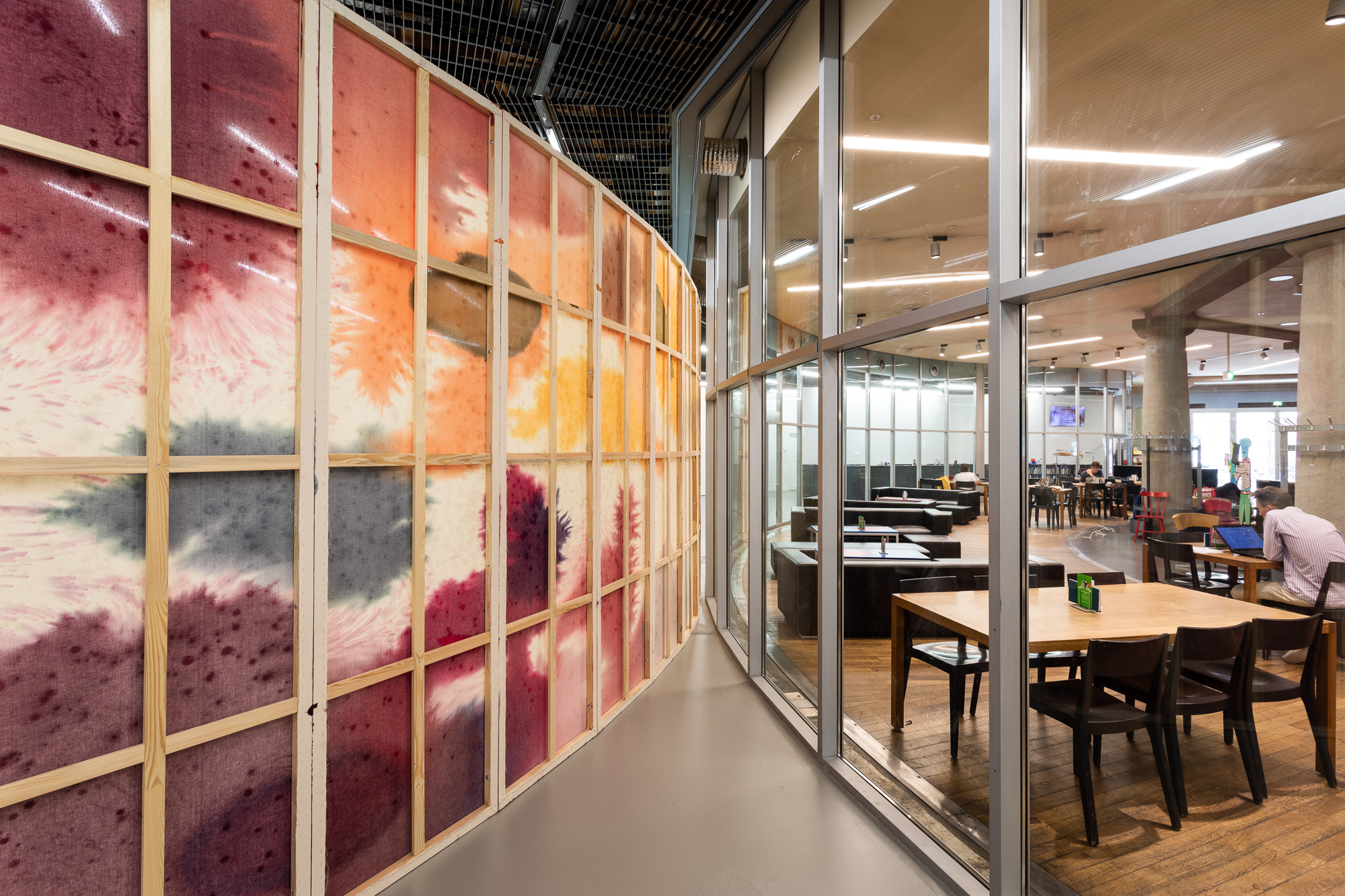
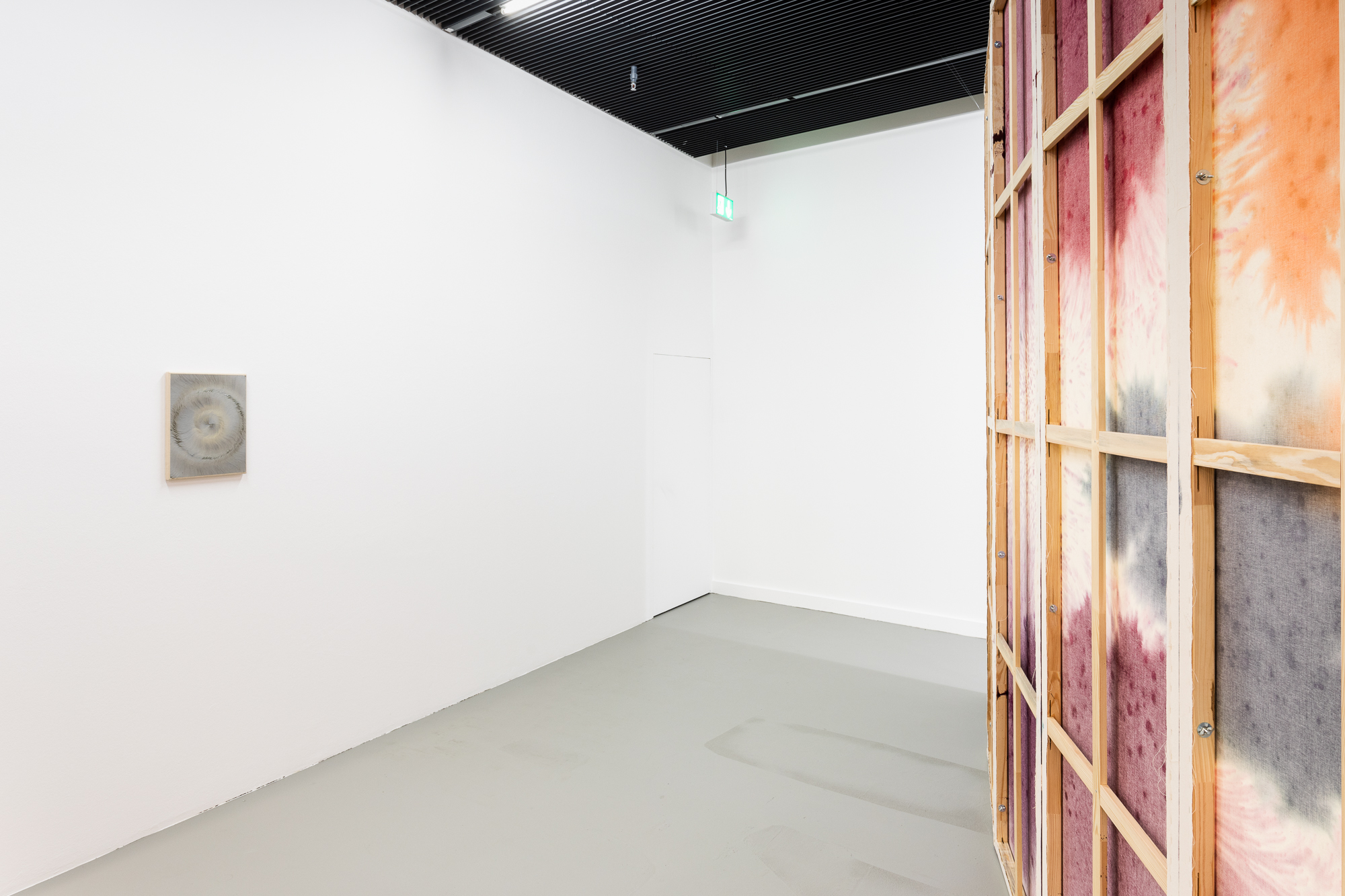
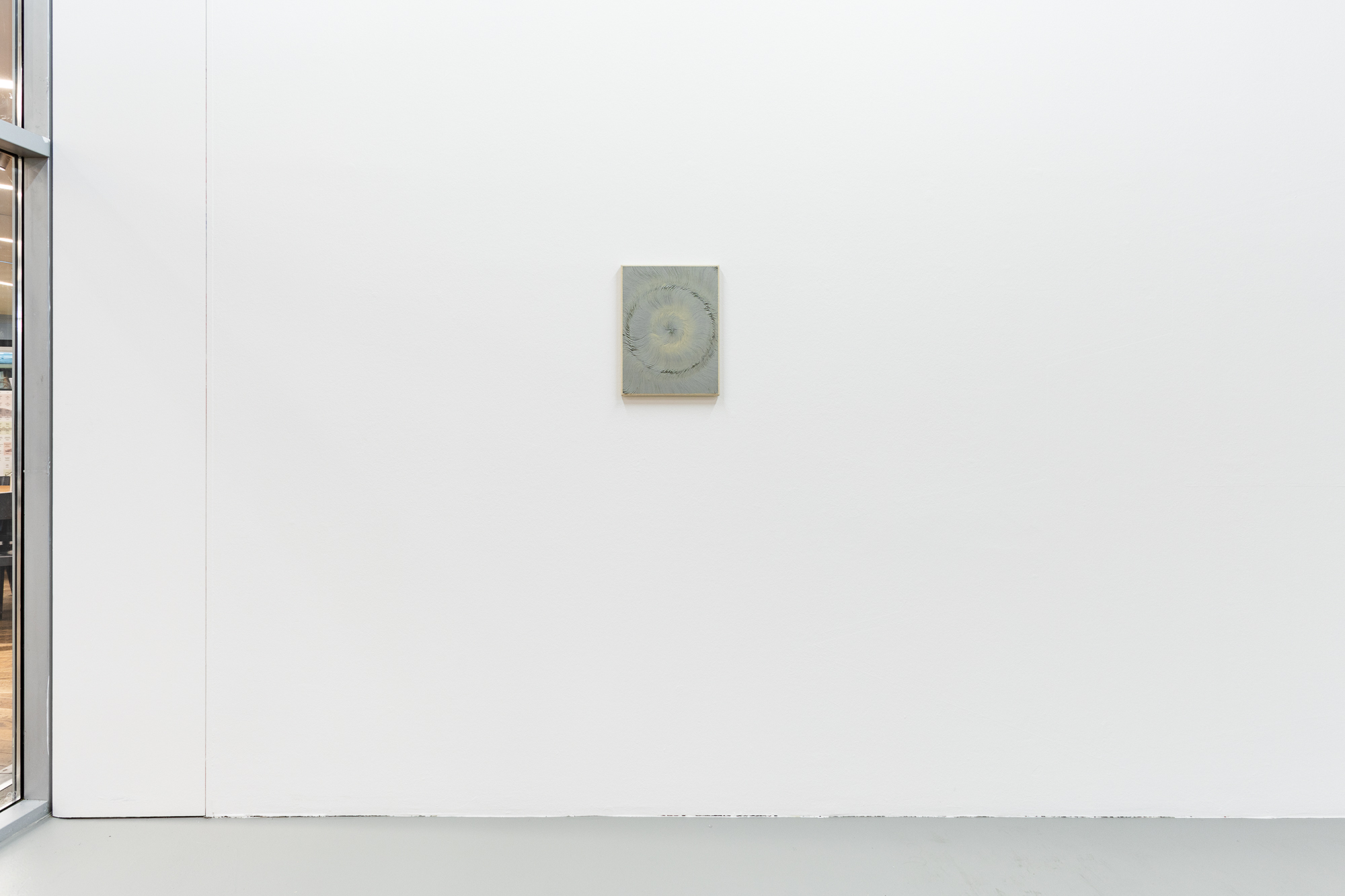
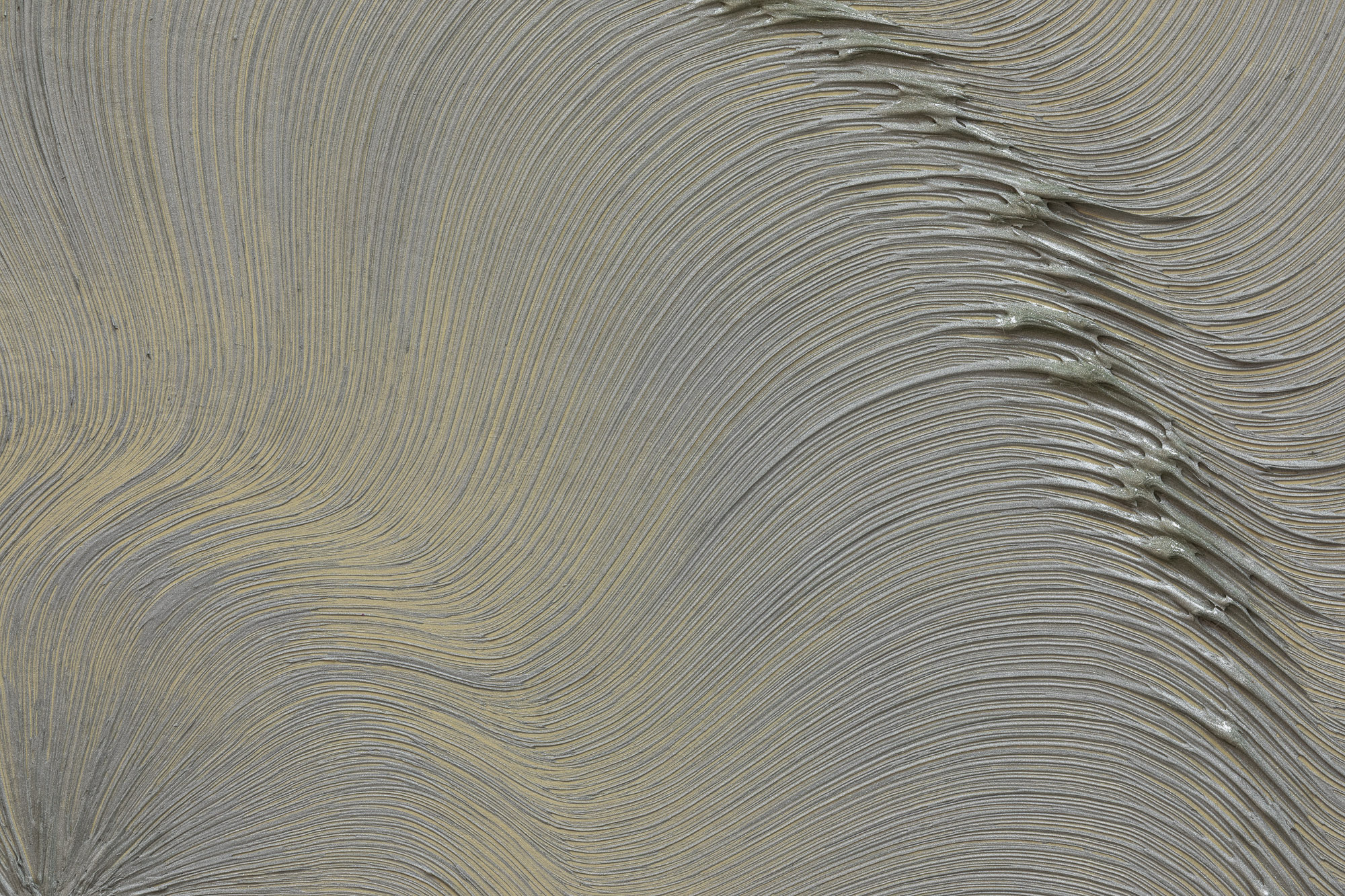
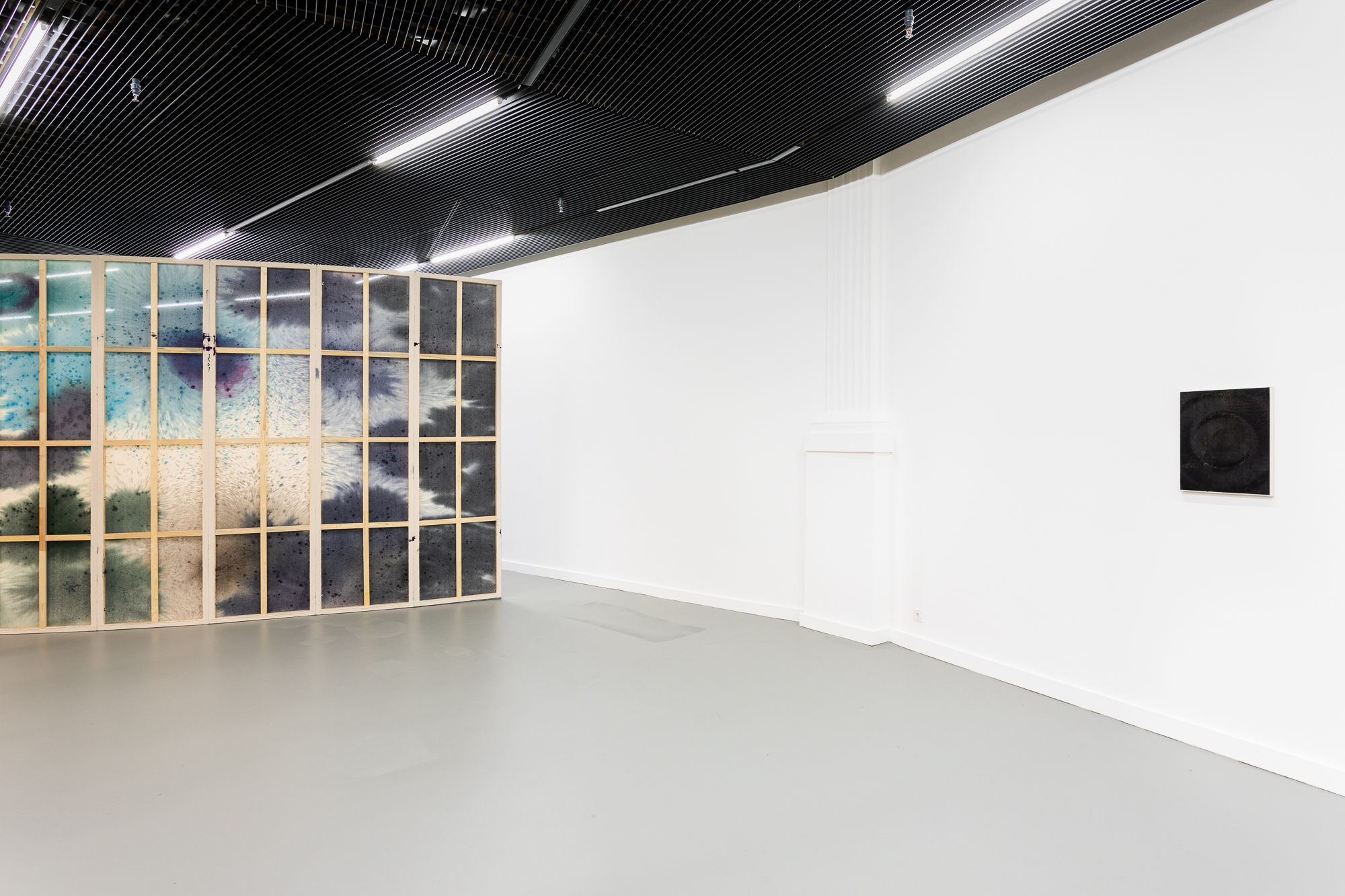
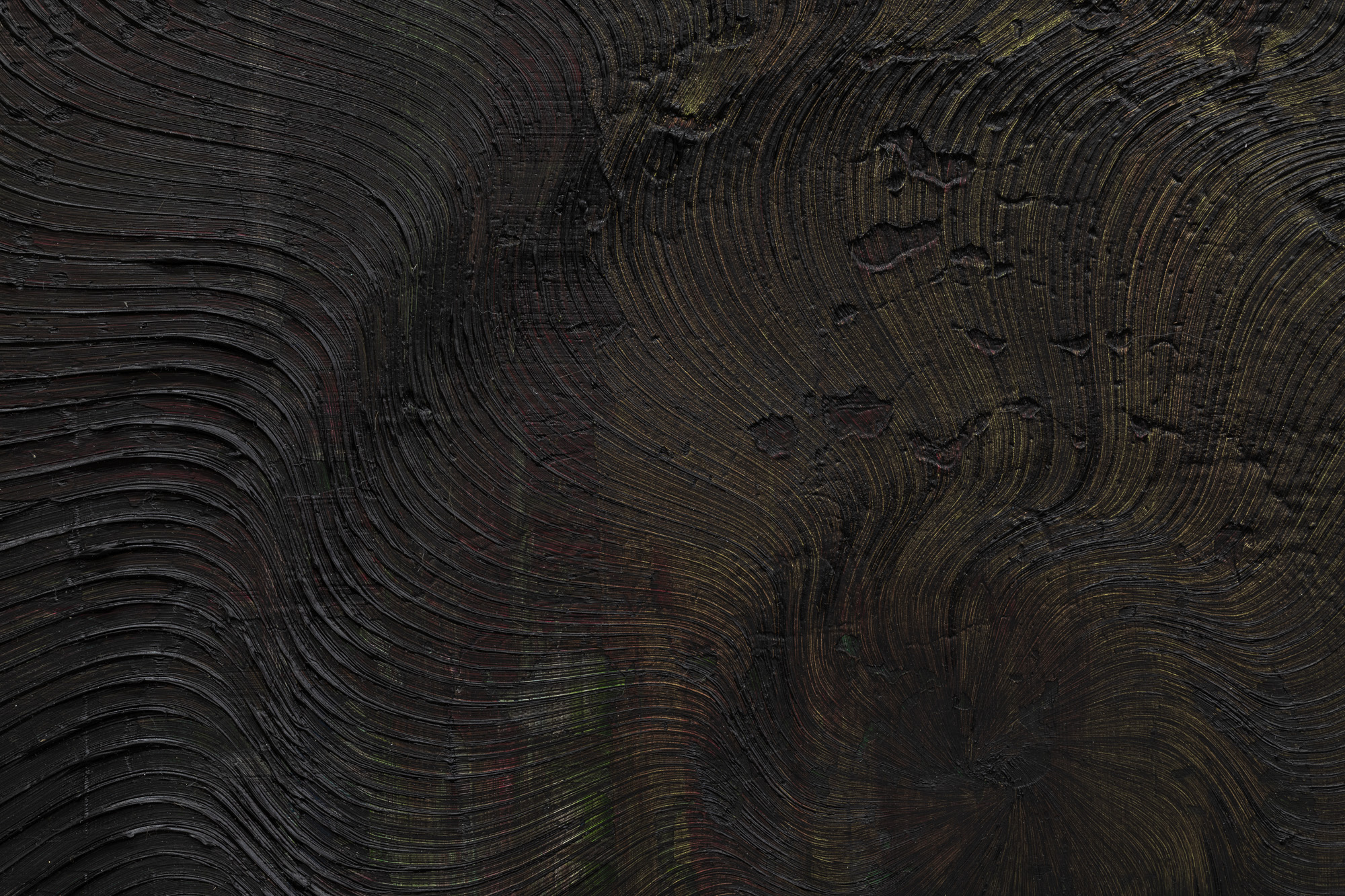
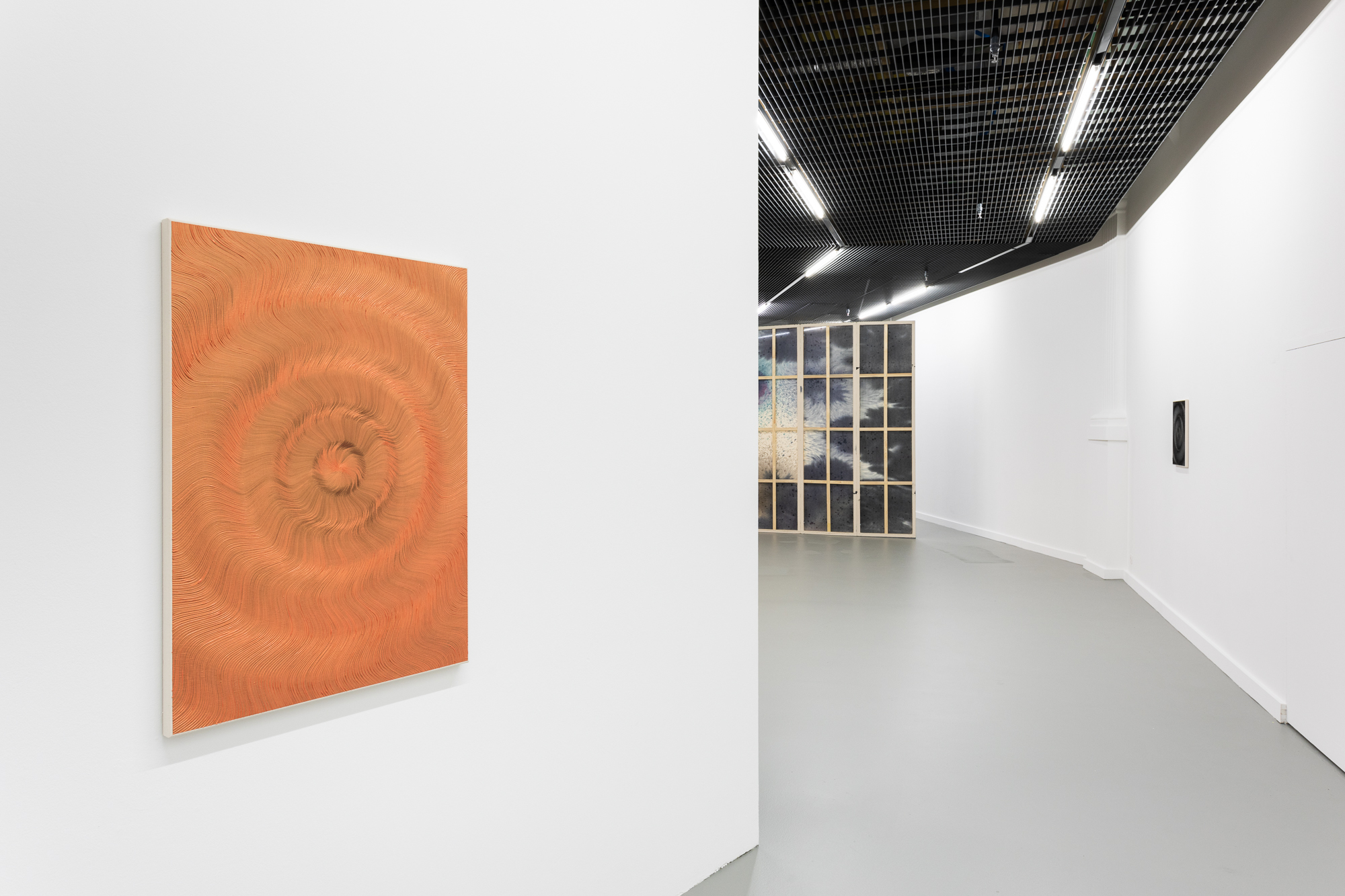
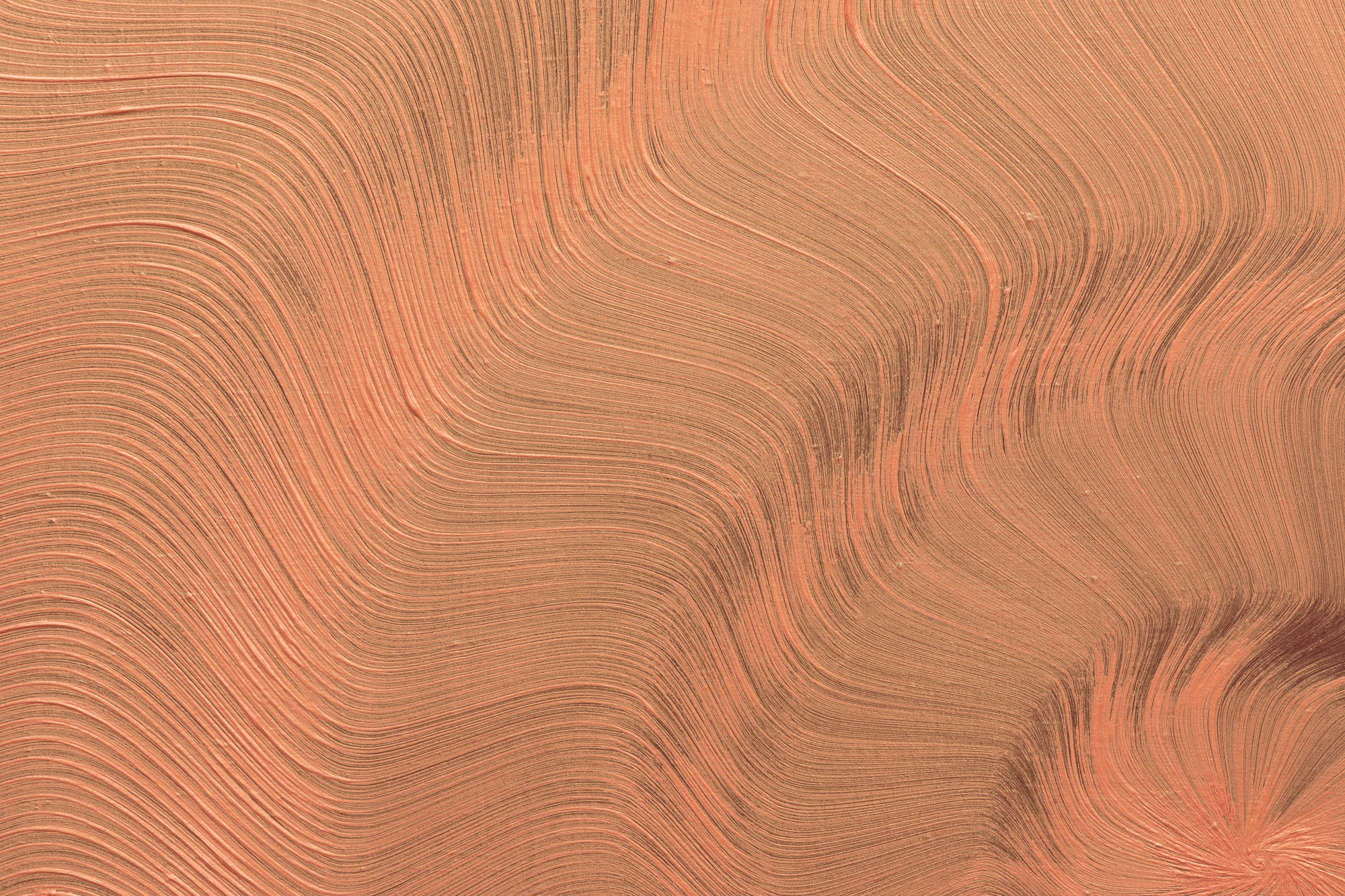
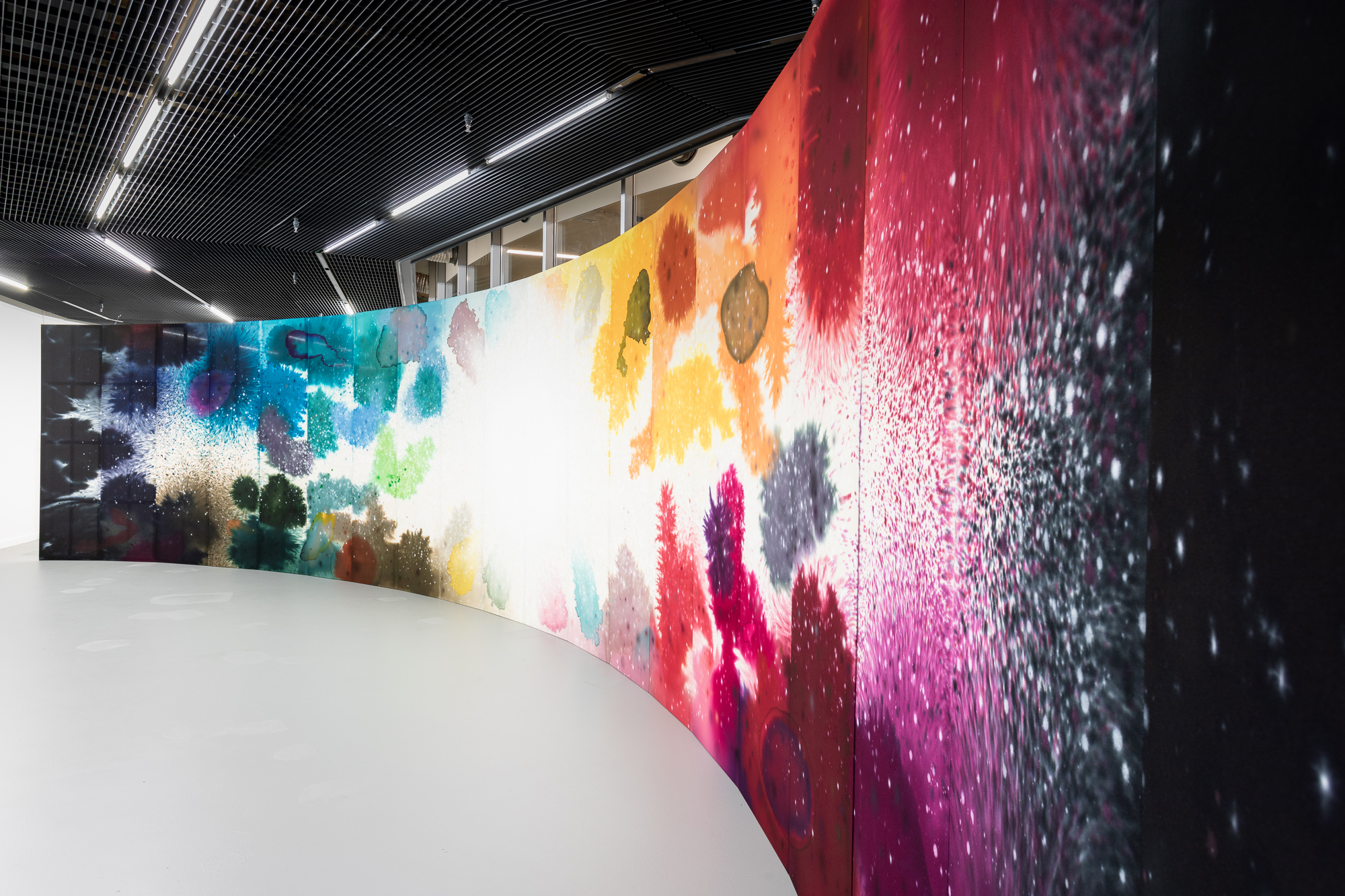
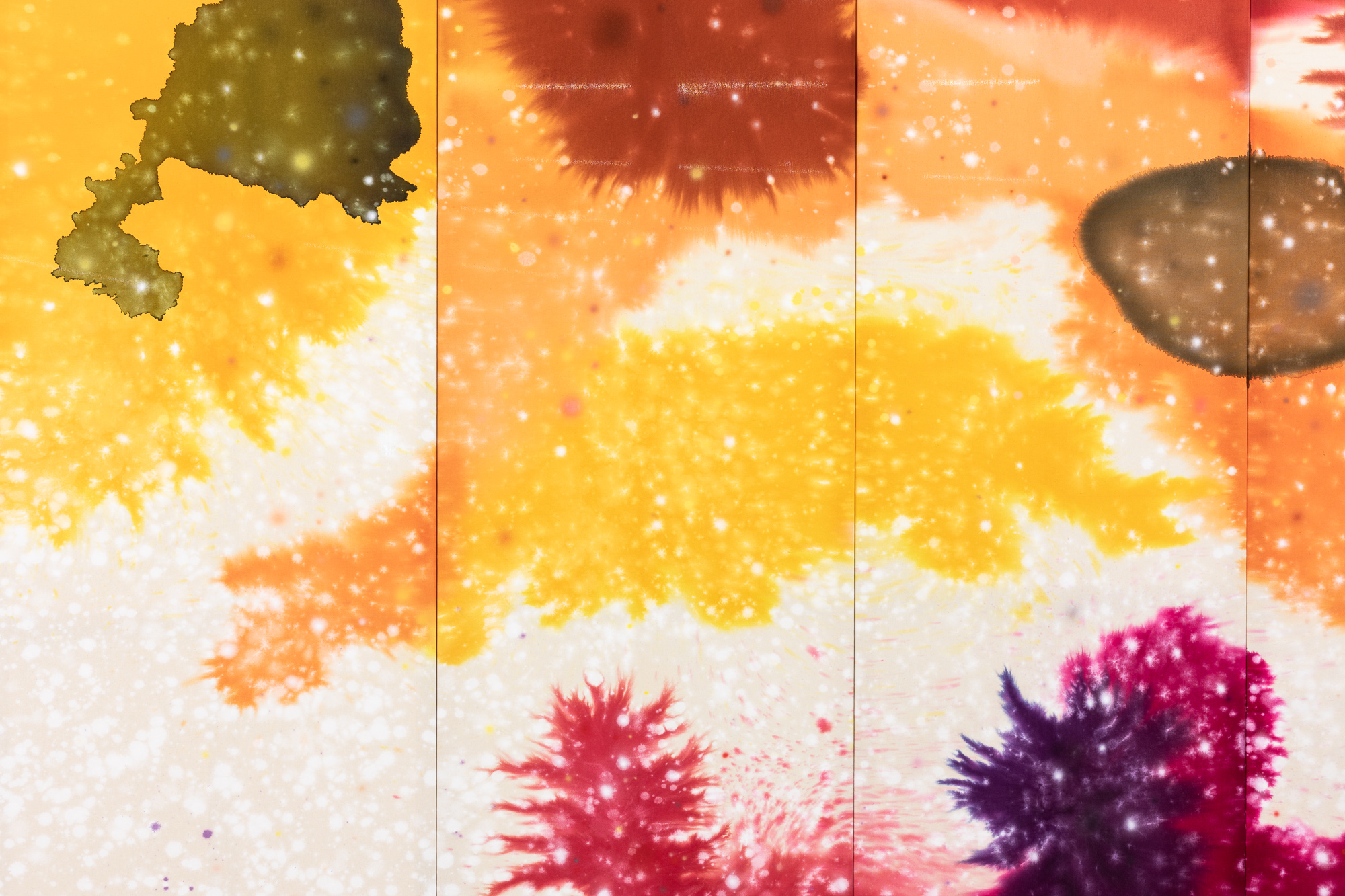
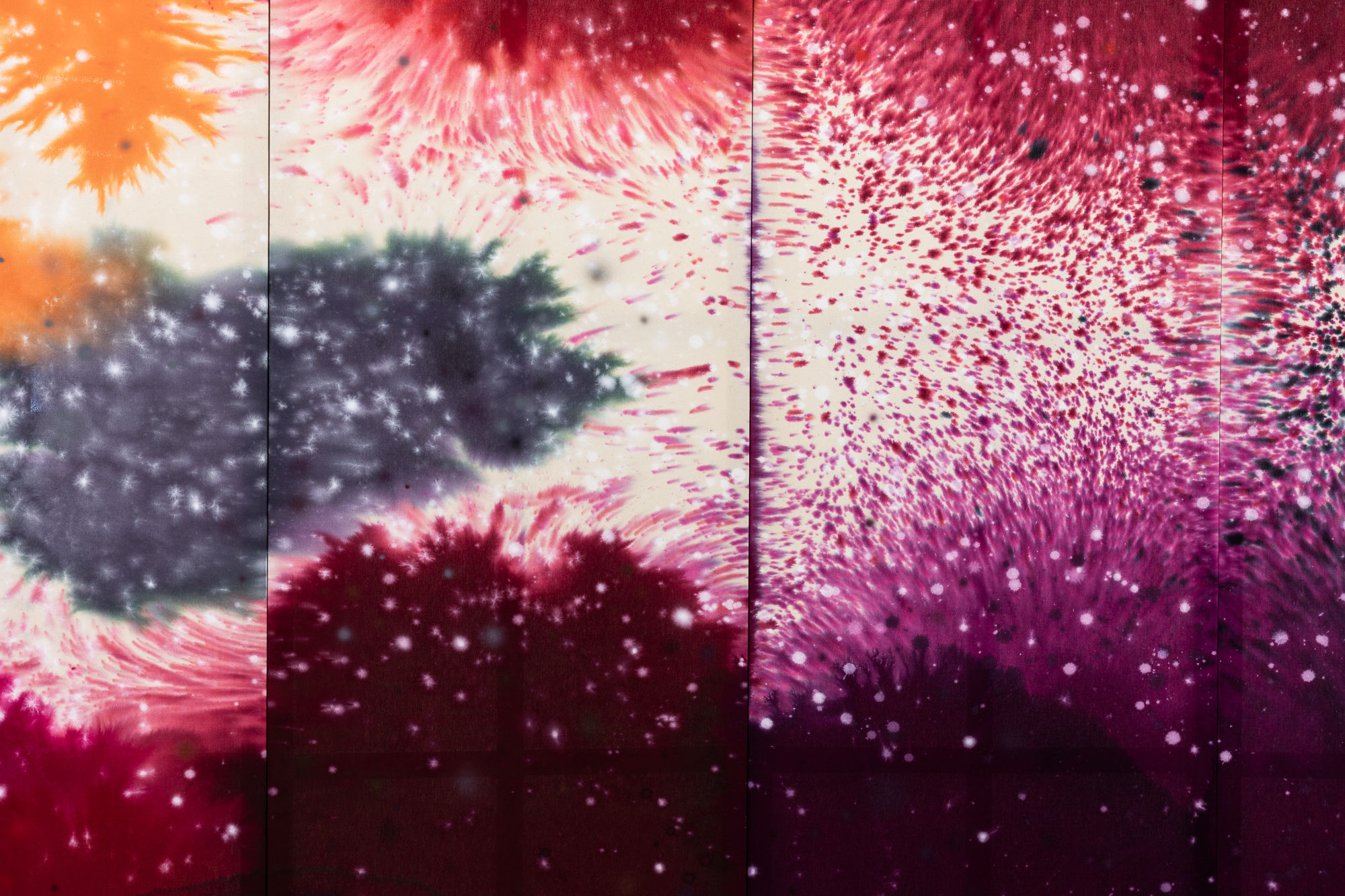
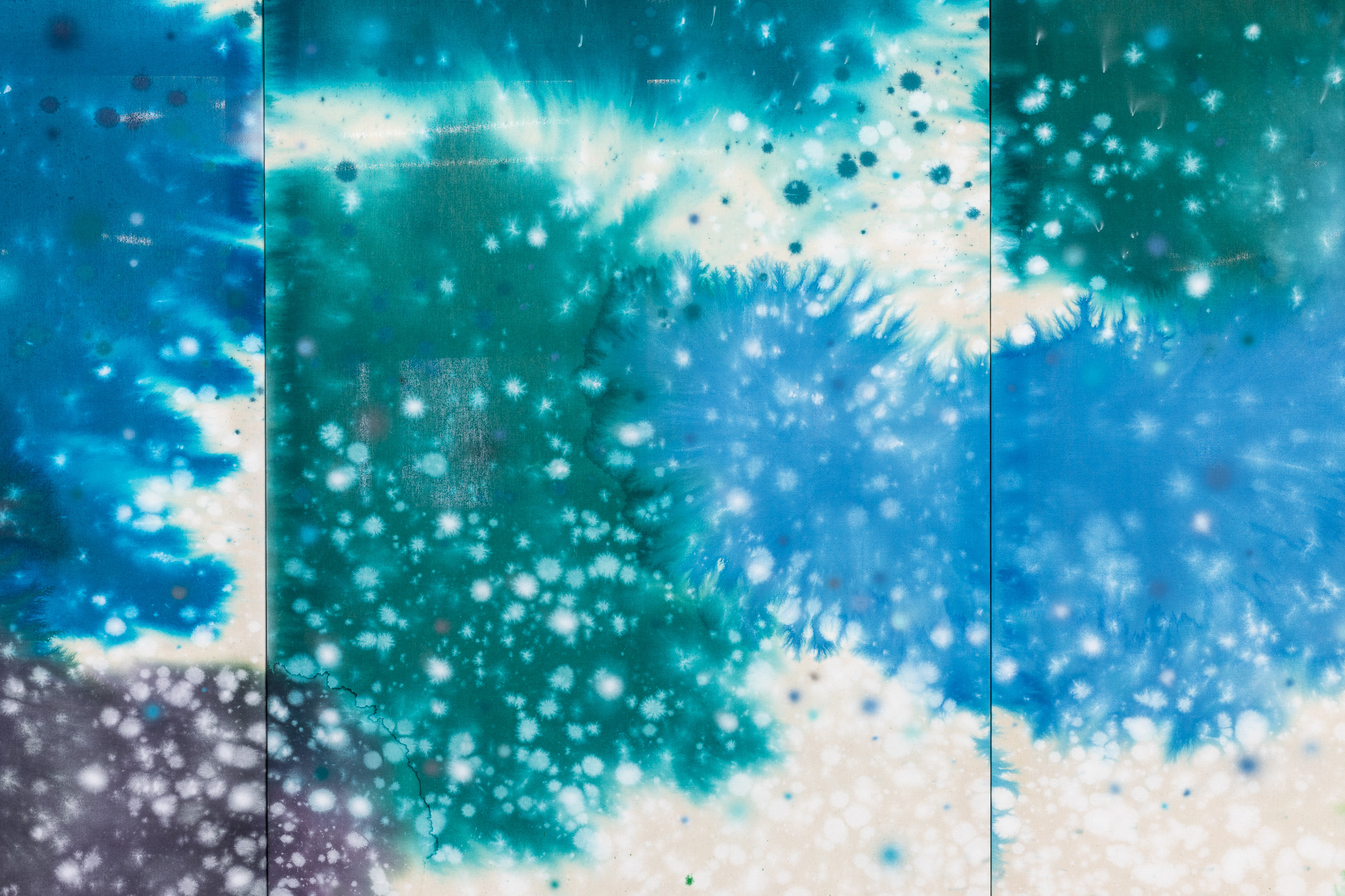
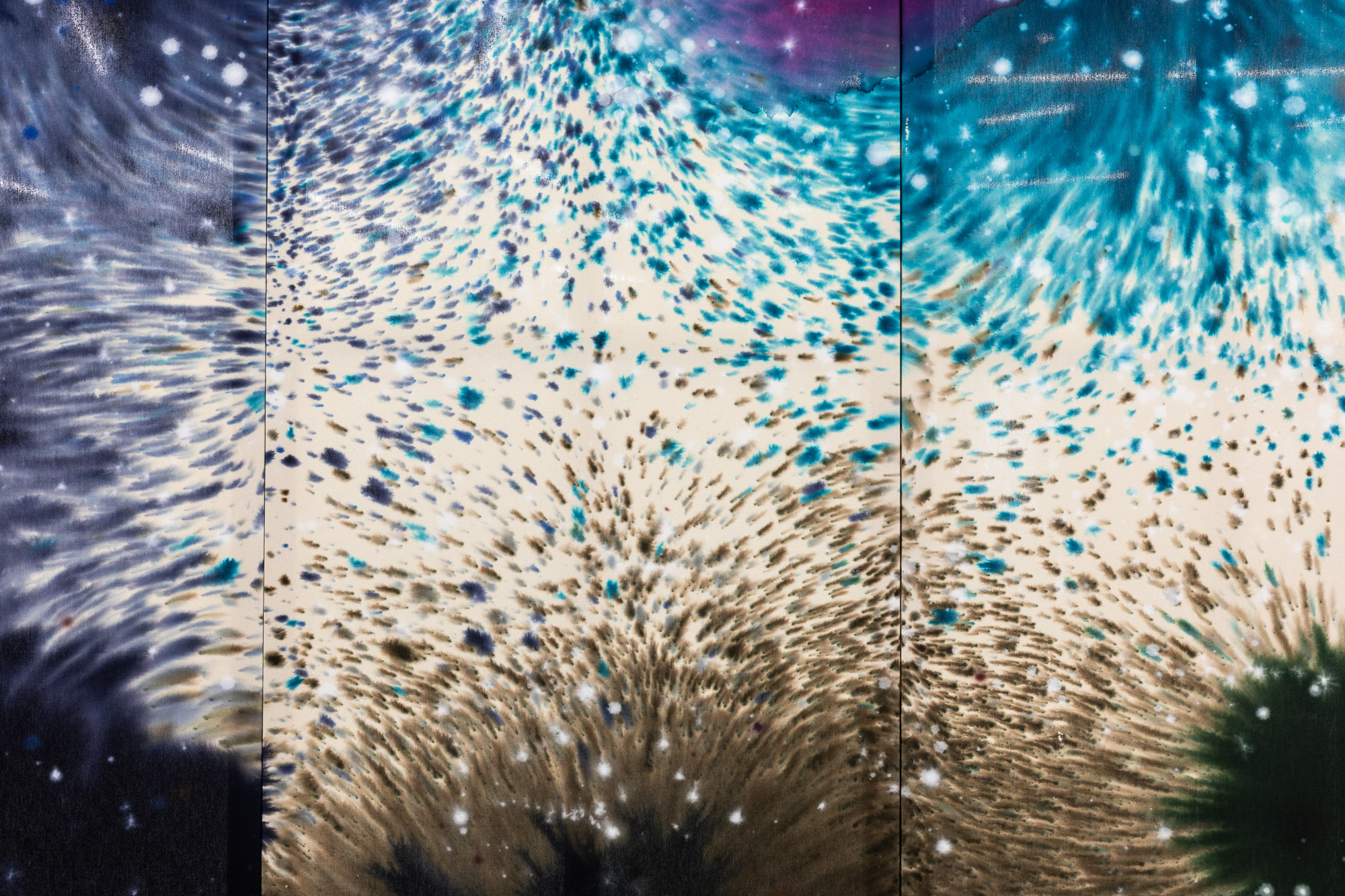
Mit einer Gegenbewegung zur vorherrschenden Architektur definiert die begehbare Installation ein komplett neues Raumgefühl, das sich je nach Blickwinkel stets zu verändern vermag. Giacomo Santiago Rogado (*1979 in Luzern) hat für die markanten Raumverhältnisse der Kunsthalle Luzern eine panoramaartige Malerei aus aneinandergereihten Leinwänden erstellt. Dabei steht die äussere Erscheinung in einer starken Wechselbeziehung zum Innern, das erst durch das Betreten des Ausstellungsraumes vollumfänglich ersichtlich wird.
In ihrer imposanten Dimension – 3m x 16m – zeigt die Installation eine farbintensive, abstrakte Malerei, die von Giacomo Santiago Rogado mit selbstentwickelten Techniken und experimentellen Malereiverfahren gefertigt wurde. Vom hellen Zentrum aus erstrecken sich symmetrisch nach links und rechts verschiedenste Farbverläufe, die sich überlagern und unterschiedliche Ebenen mit Tiefenwirkung erzeugen. Auf beide Seitenenden hin verdunkelt sich die Farbigkeit und endet in nachtschwarzen Bildbereichen. Wie ein orchestrierter Zufall wirken die wachsenden Farbeffekte, die aufgrund der Transparenz der Leinwände zwischen Sein und Schein changieren.
Die malerischen Arbeiten von Giacomo Santiago Rogado erschliessen sich nicht per se auf den ersten Blick, vielmehr bedarf es eine visuelle und kontemplative Auseinandersetzung, damit die Werke ihre expressive Wirkung entfalten können. Betrachtenden.
In ihrer imposanten Dimension – 3m x 16m – zeigt die Installation eine farbintensive, abstrakte Malerei, die von Giacomo Santiago Rogado mit selbstentwickelten Techniken und experimentellen Malereiverfahren gefertigt wurde. Vom hellen Zentrum aus erstrecken sich symmetrisch nach links und rechts verschiedenste Farbverläufe, die sich überlagern und unterschiedliche Ebenen mit Tiefenwirkung erzeugen. Auf beide Seitenenden hin verdunkelt sich die Farbigkeit und endet in nachtschwarzen Bildbereichen. Wie ein orchestrierter Zufall wirken die wachsenden Farbeffekte, die aufgrund der Transparenz der Leinwände zwischen Sein und Schein changieren.
Die malerischen Arbeiten von Giacomo Santiago Rogado erschliessen sich nicht per se auf den ersten Blick, vielmehr bedarf es eine visuelle und kontemplative Auseinandersetzung, damit die Werke ihre expressive Wirkung entfalten können. Betrachtenden.
Generell regen seine Arbeiten den individuellen Sehprozess an und beeinflussen die räumliche Wahrnehmung der Optische Illusionen erwirkt Giacomo Santiago Rogado mit den drei kleinformatigen Malereien aus der Serie «Coalescence», die sich als minimale Setzungen im Hauptraum gegenüber der monumentalen Installation behaupten. Von der Ferne wirken die drei Arbeiten mehr oder weniger einfarbig, wobei sich die geschwungenen Linien mit ihrem Zentrum erst bei näherem Betrachten erschliessen. Ein kontrollierter, meditativer Malereiprozess mit Acryl und Öl ergibt eine dynamisch-wellige Struktur in Kreisformat, deren Farbigkeit sich beim Vorbeigehen stetig verändert.
Im Kabinett der Kunsthalle Luzern zeigt Giacomo Santiago Rogado eine Auswahl gerahmter, kleinformatiger Papierarbeiten. In einer dichten, gleichmässigen Aneinanderreihung werden verschiedene Varianten seines Umgangs mit Farben, Formen und Strukturen sichtbar. Die Papierarbeiten fungieren wie ein Mind-Map, welches die Spannbreite seines technischen Schaffens aufzeigt und die Weiterentwicklung von Forschung und Formfindung dokumentiert. Es handelt sich um eigenständige Arbeiten, worin sich seine selbst entwickelten Techniken vermischen und neuartige Malerei-Kombinationen generieren.
Michael Sutter
Im Kabinett der Kunsthalle Luzern zeigt Giacomo Santiago Rogado eine Auswahl gerahmter, kleinformatiger Papierarbeiten. In einer dichten, gleichmässigen Aneinanderreihung werden verschiedene Varianten seines Umgangs mit Farben, Formen und Strukturen sichtbar. Die Papierarbeiten fungieren wie ein Mind-Map, welches die Spannbreite seines technischen Schaffens aufzeigt und die Weiterentwicklung von Forschung und Formfindung dokumentiert. Es handelt sich um eigenständige Arbeiten, worin sich seine selbst entwickelten Techniken vermischen und neuartige Malerei-Kombinationen generieren.
Michael Sutter
2019/
Immersion/ Desire Path
Solo show
Kunstmuseum Solothurn
Kunstmuseum Solothurn
23/9/19—16/2/20
Solothurn
Solothurn
2020
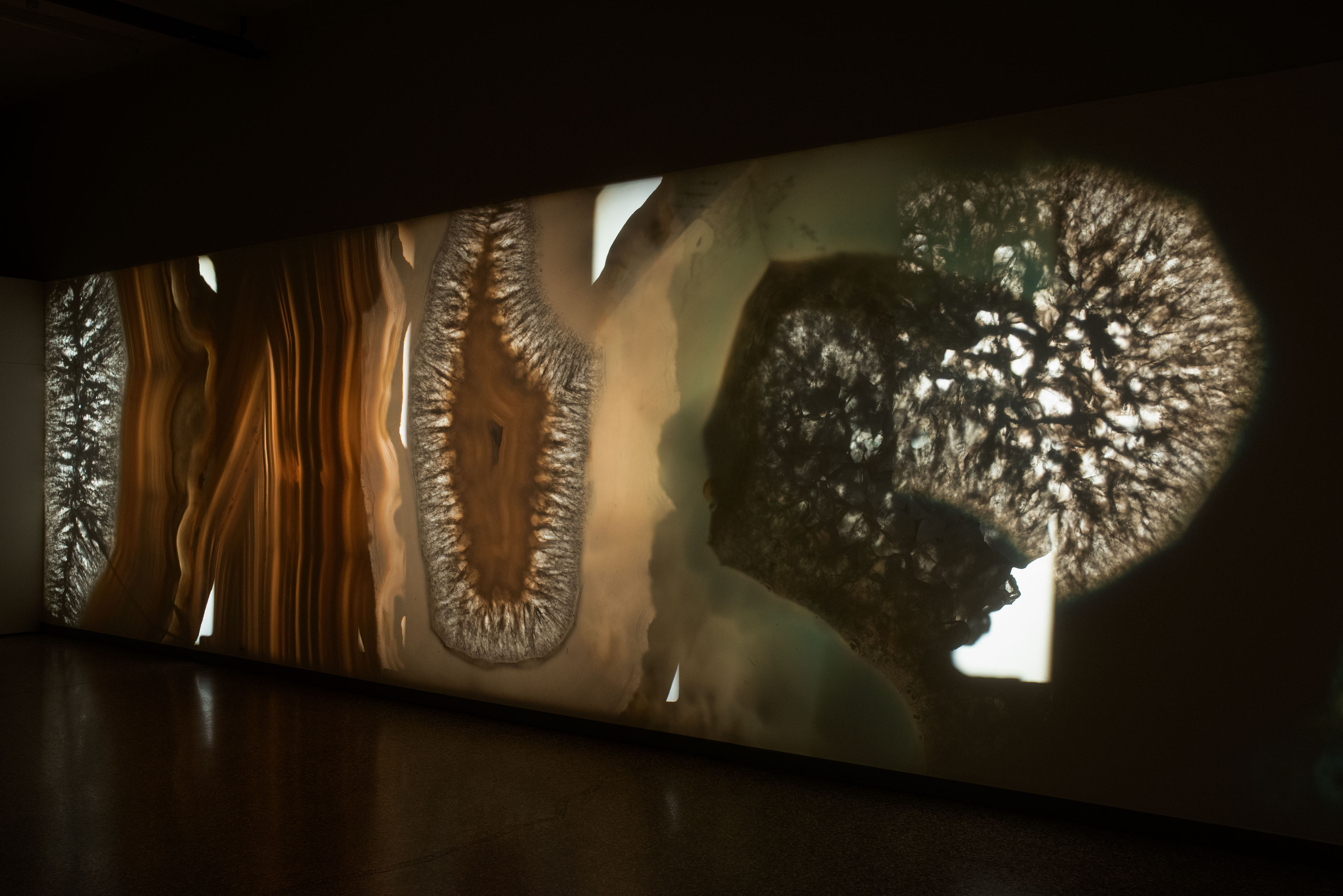

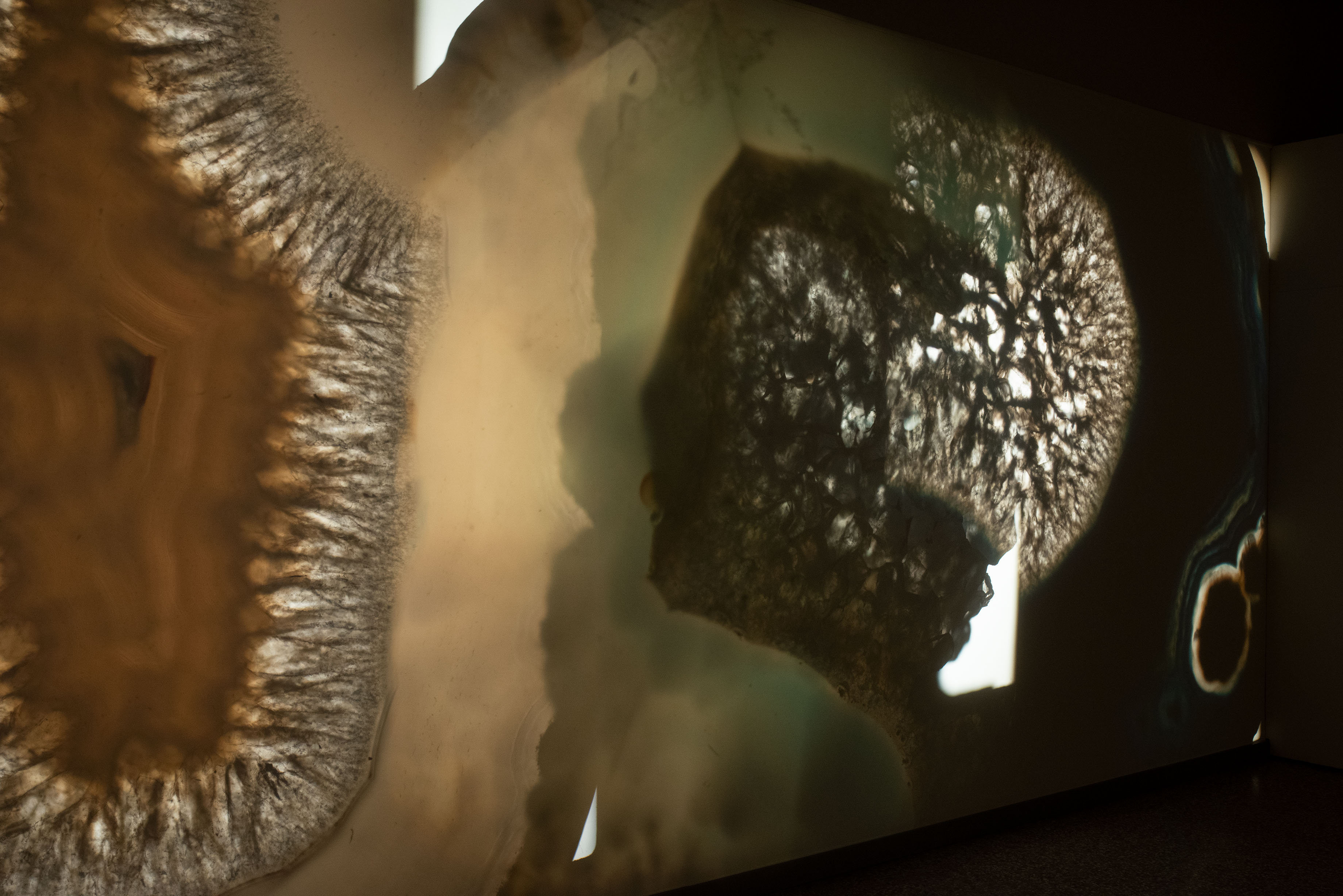

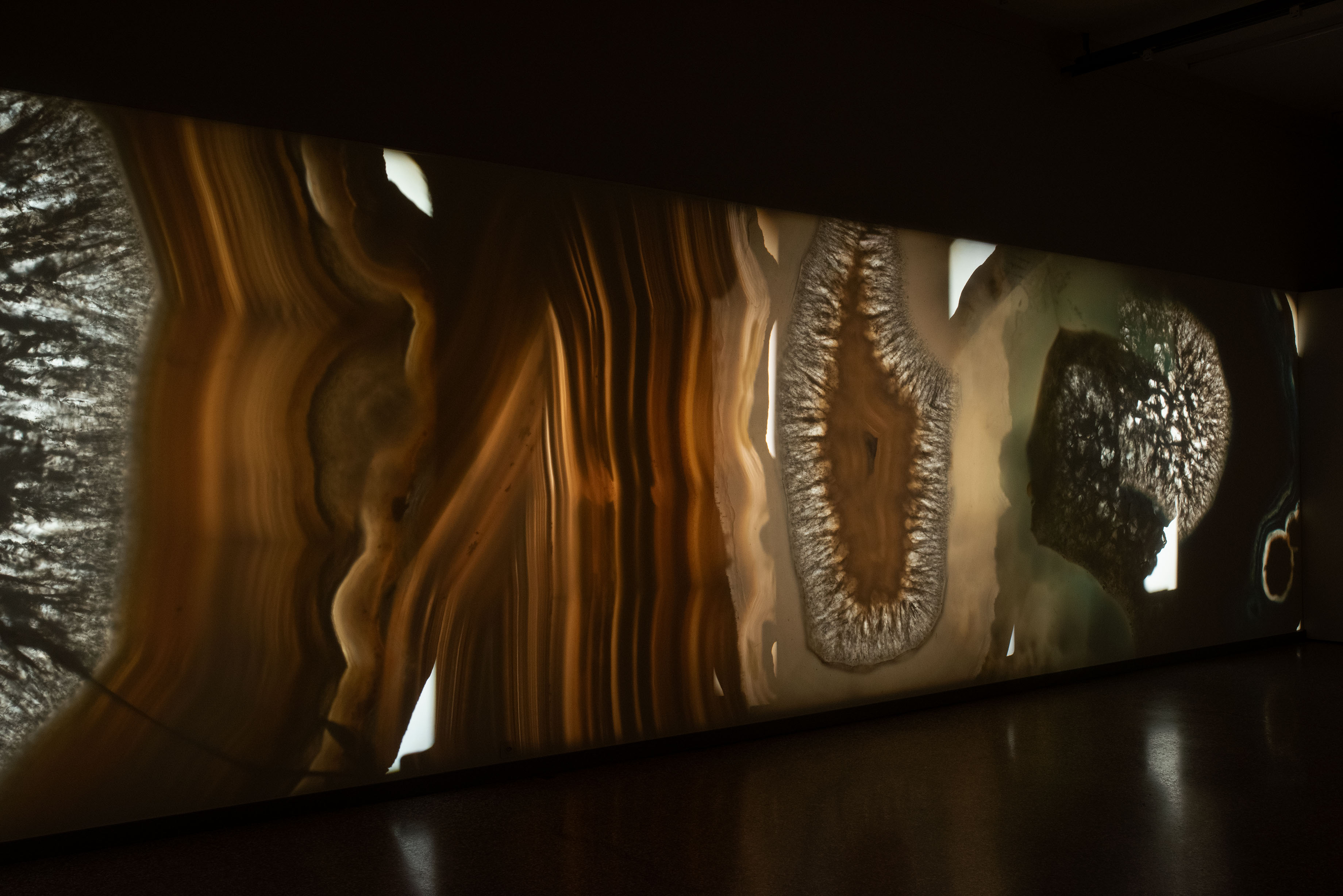
The exhibition Desire Path at the Kunstmuseum Solothurn presents a comprehensive overview of the recent work of Giacomo Santiago Rogado (b. 1979, Lucerne). Known for his innovative approach to painting and his refined sense of light and space, Rogado transforms the museum into an immersive environment where each room unfolds as a distinct spatial and perceptual experience.
In the fourth room, Giacomo Santiago Rogado transforms the space into a large-scale light installation, highlighting the central role of light in his artistic practice. Here, painting expands into a realm of pure luminosity and projection. Rogado uses slices of agate stones, inserting them like slides into projectors. The colorful stones, when illuminated, cast shimmering light images across the walls — compositions that strikingly echo the visual language of his paintings.
In the fourth room, Giacomo Santiago Rogado transforms the space into a large-scale light installation, highlighting the central role of light in his artistic practice. Here, painting expands into a realm of pure luminosity and projection. Rogado uses slices of agate stones, inserting them like slides into projectors. The colorful stones, when illuminated, cast shimmering light images across the walls — compositions that strikingly echo the visual language of his paintings.
Although Rogado carefully selects each stone, its cut, and the sequence of projections, he ultimately allows nature itself to “paint.” The translucent minerals reveal organic structures and chromatic depths that recall Rogado’s meditative exploration of color, form, and perception. The resulting wall-filling panorama envelops viewers in a contemplative environment where the boundaries between natural formation and artistic creation dissolve.
This room embodies Rogado’s ongoing dialogue between control and chance, perception and illusion. The agate projections extend his painterly logic into the immaterial realm of light, turning the exhibition space into an immersive field of color, reflection, and quiet transformation.
This room embodies Rogado’s ongoing dialogue between control and chance, perception and illusion. The agate projections extend his painterly logic into the immaterial realm of light, turning the exhibition space into an immersive field of color, reflection, and quiet transformation.
2017
Growing together through emotions over time
Solo show
Galerie Mark Müller
Galerie Mark Müller
26/8/17 – 14/10/17
Zürich
Zürich

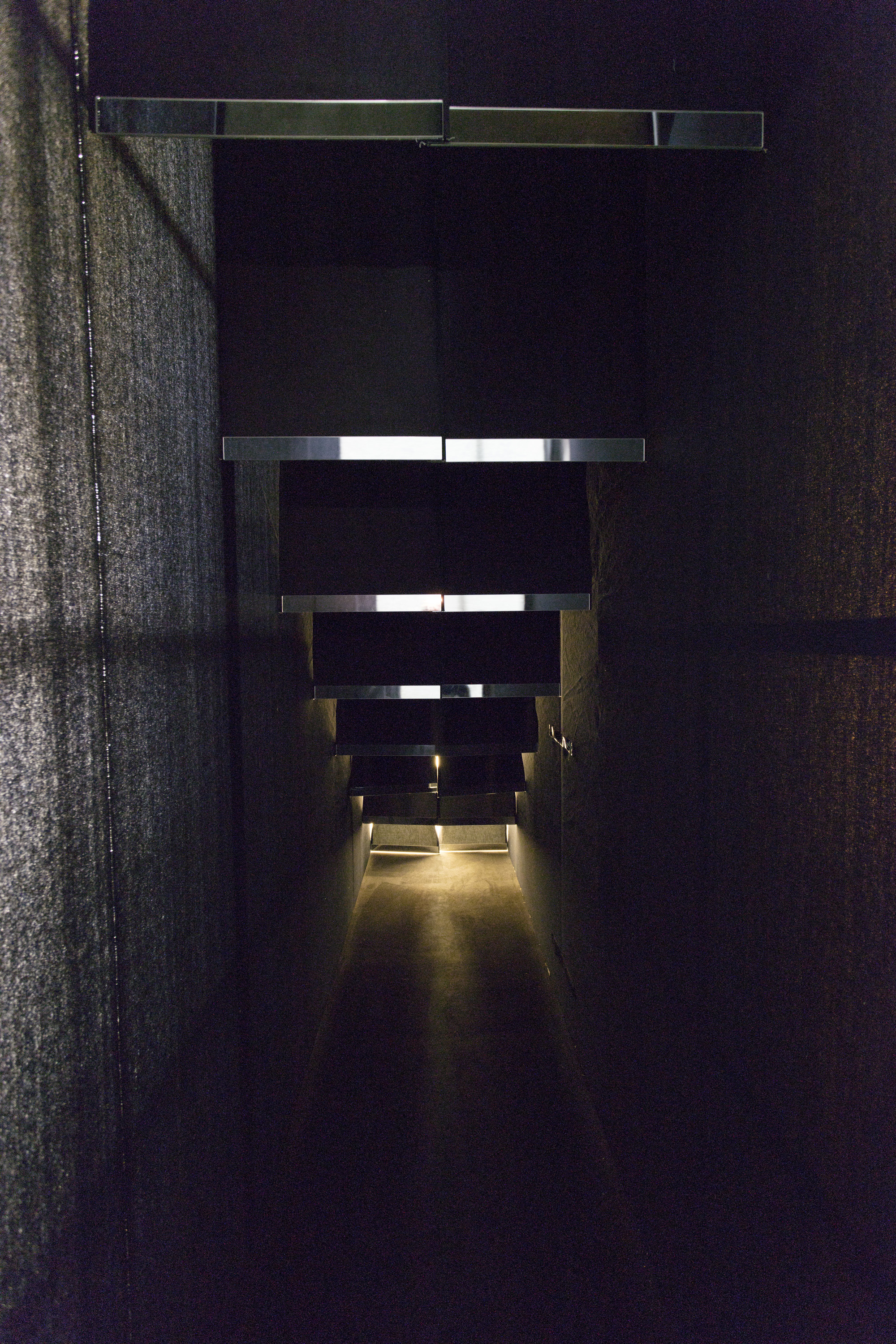
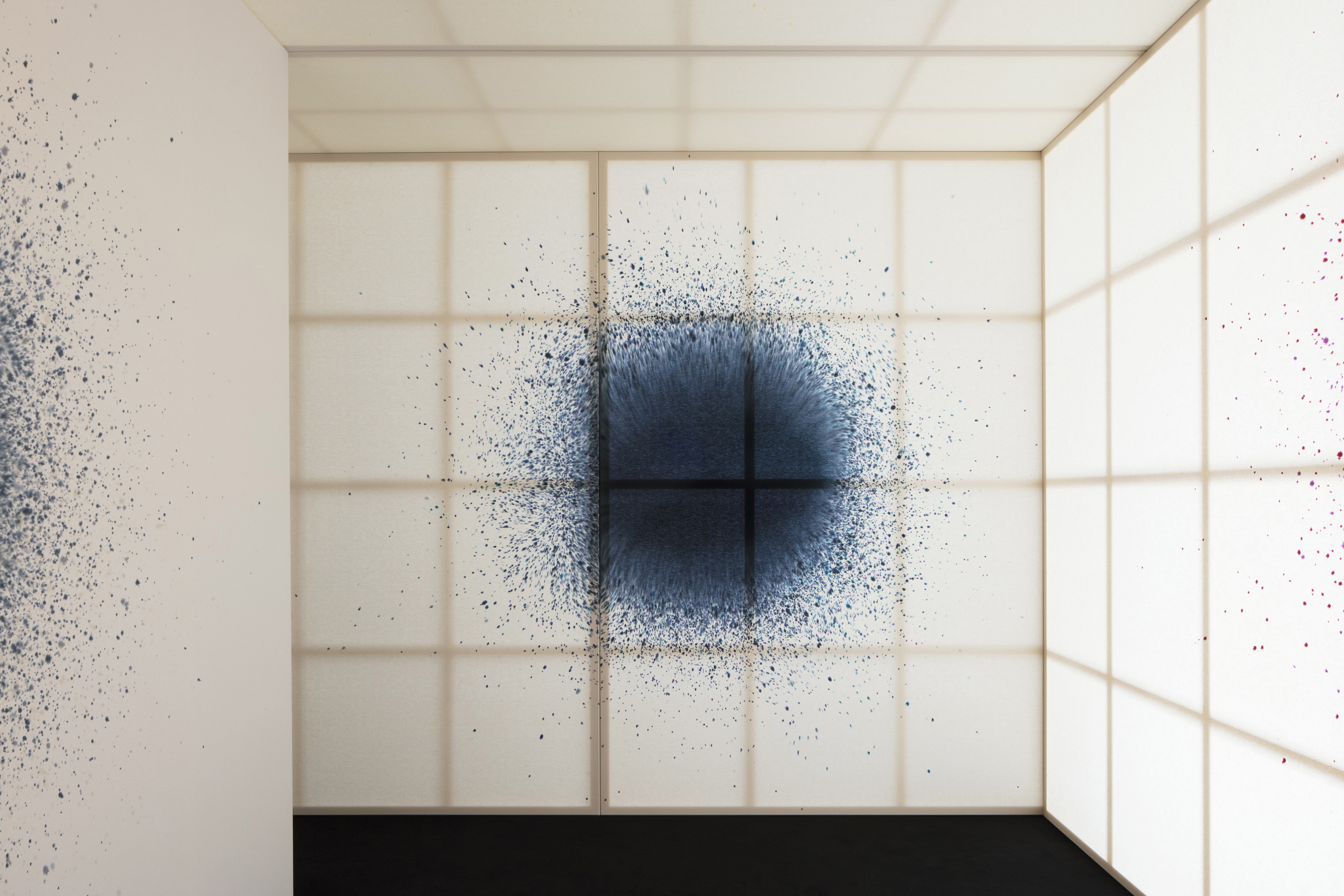
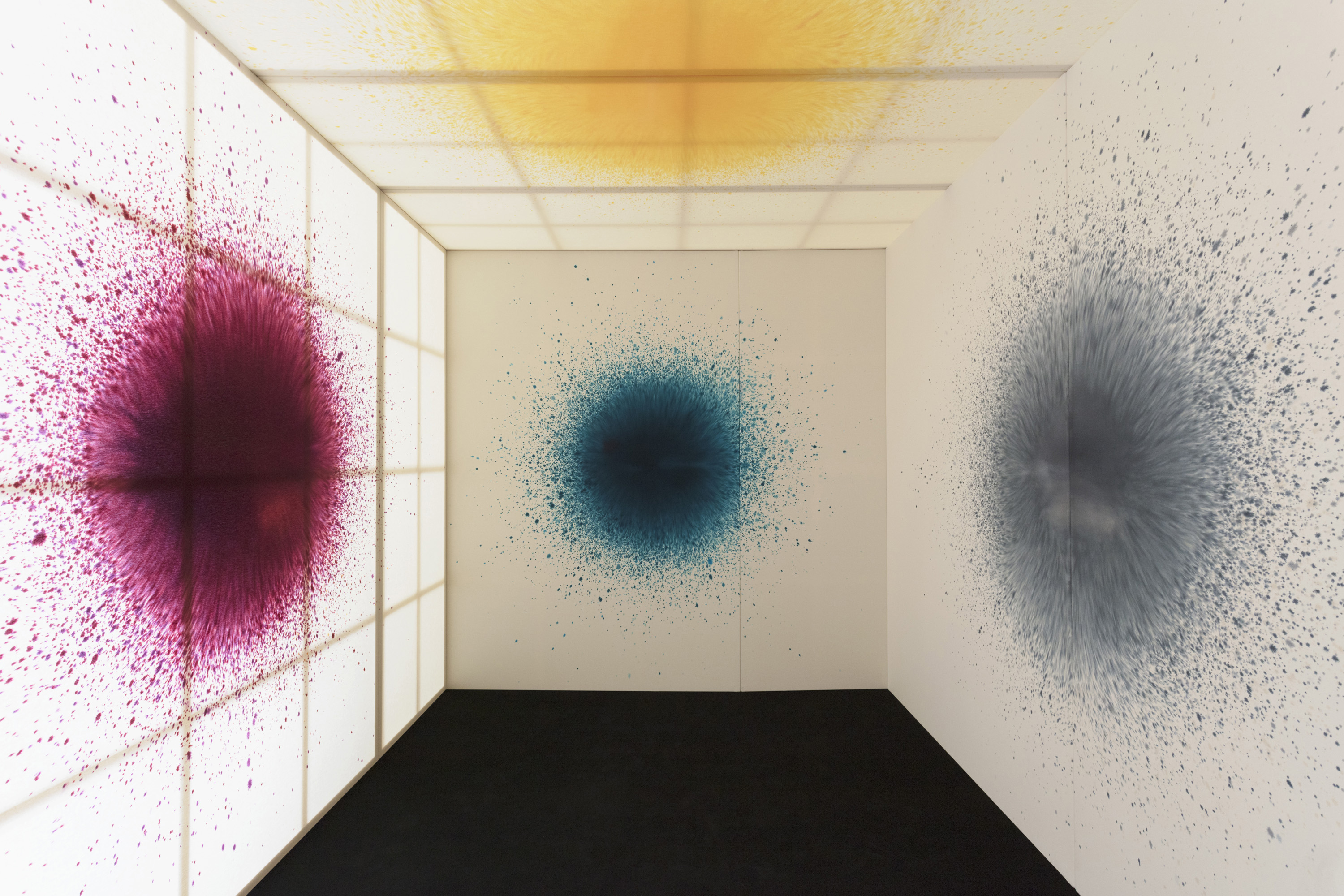
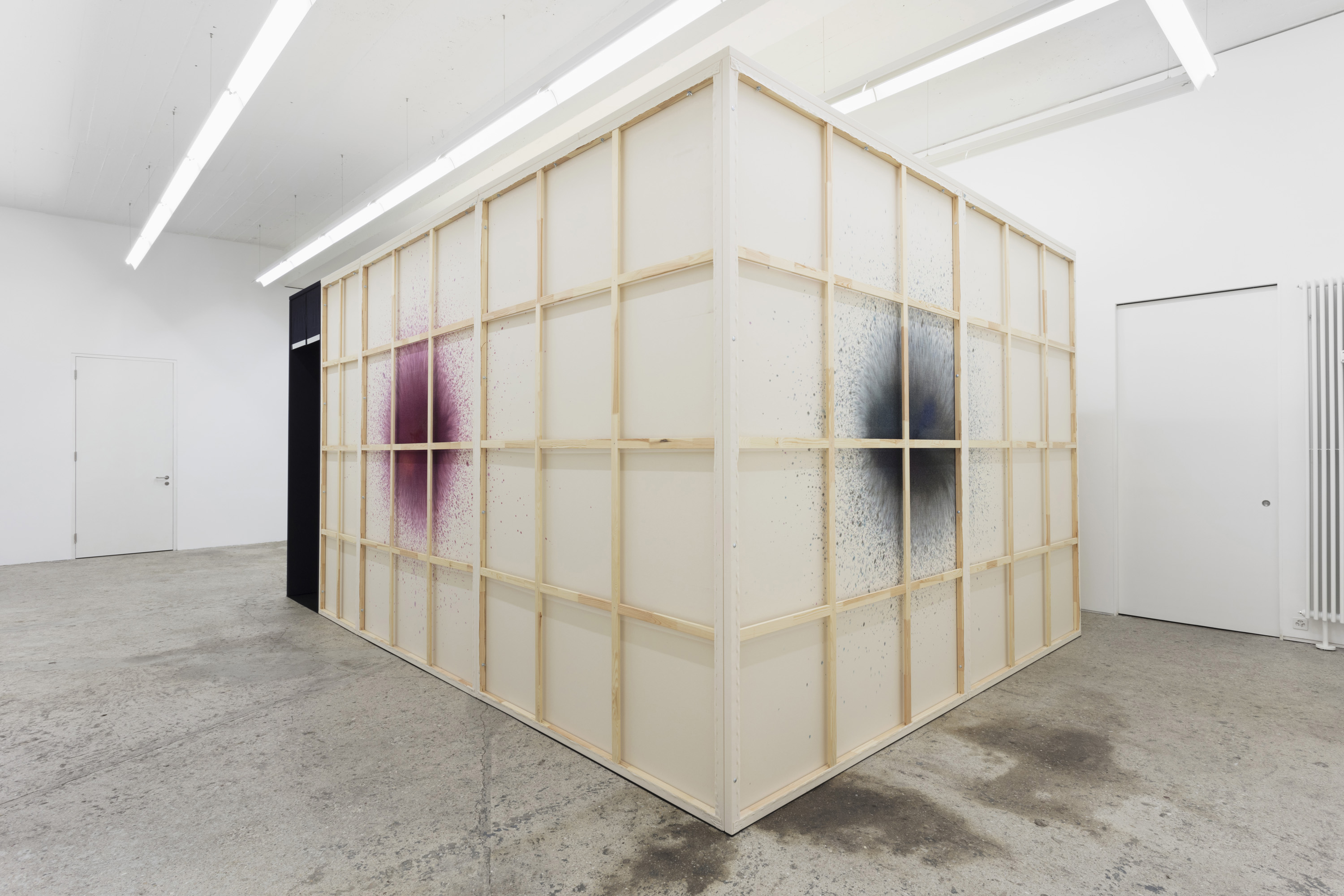
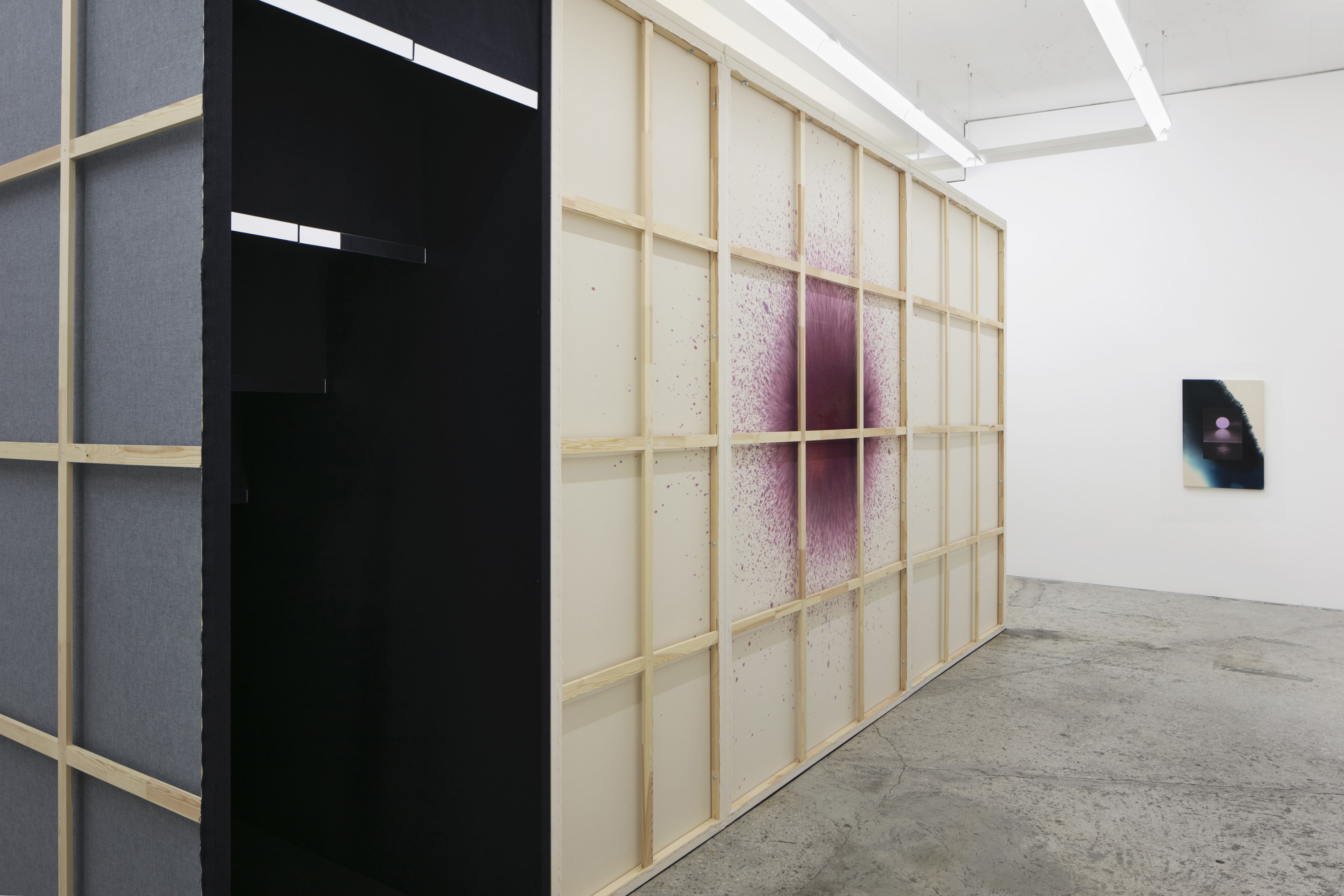
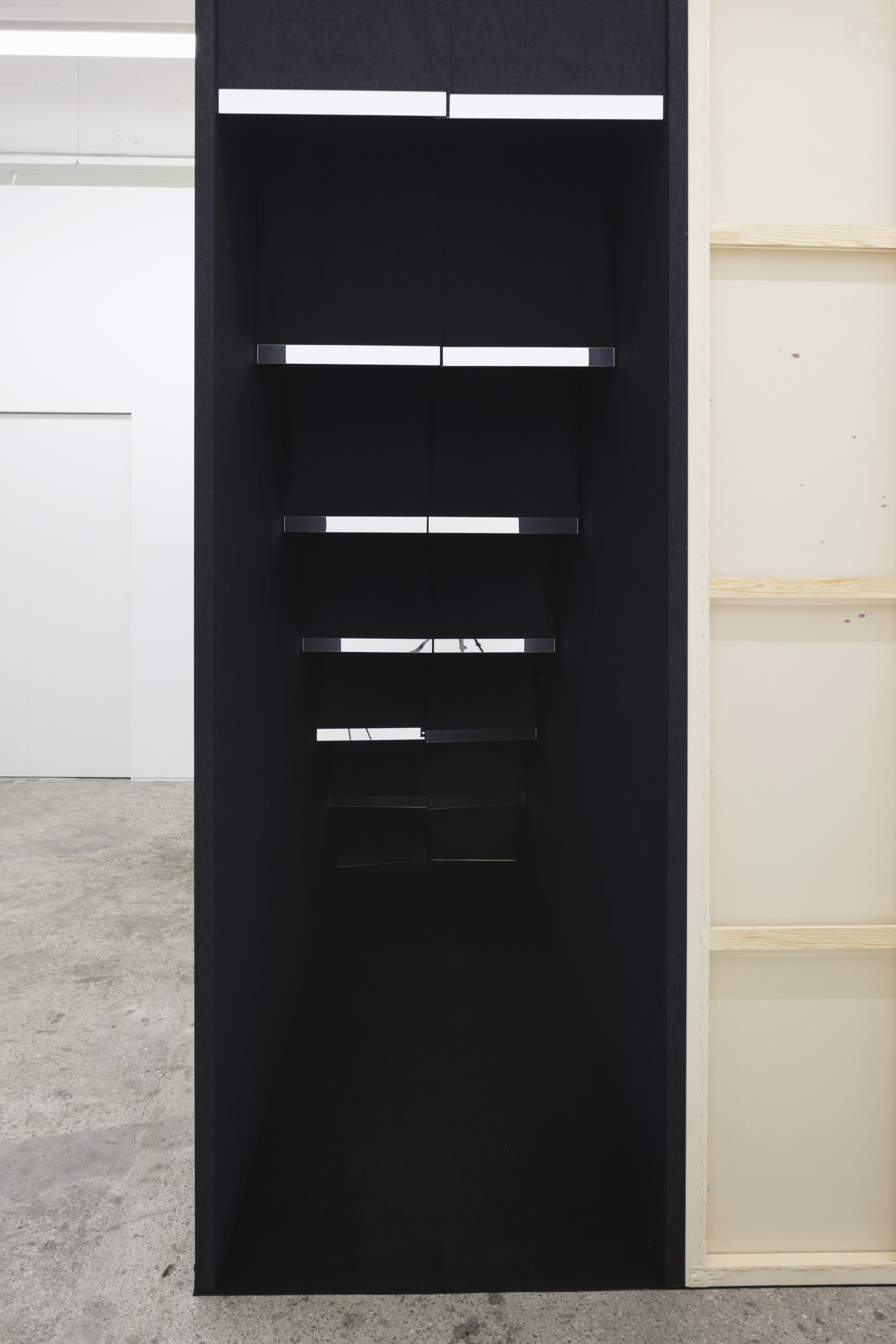
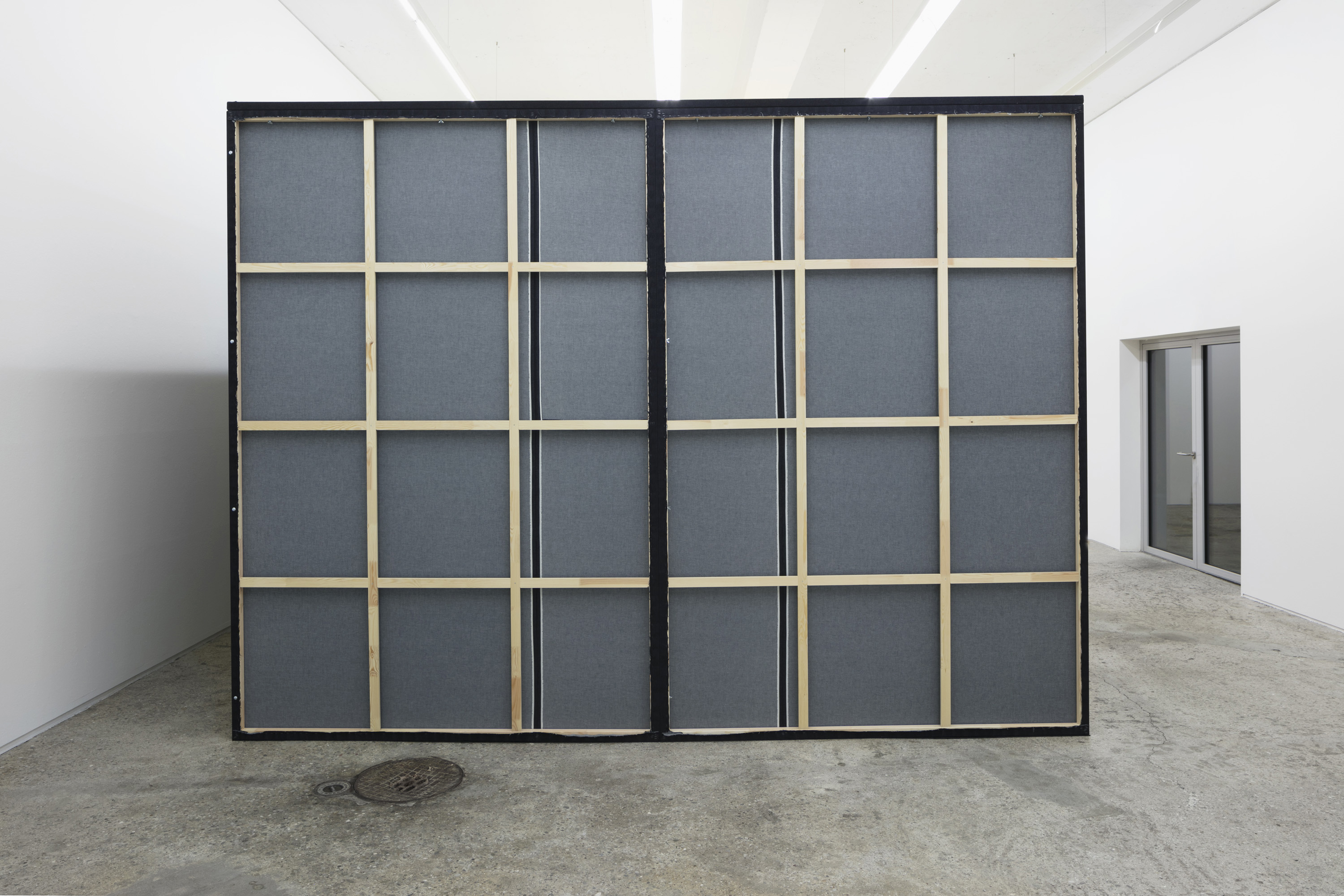
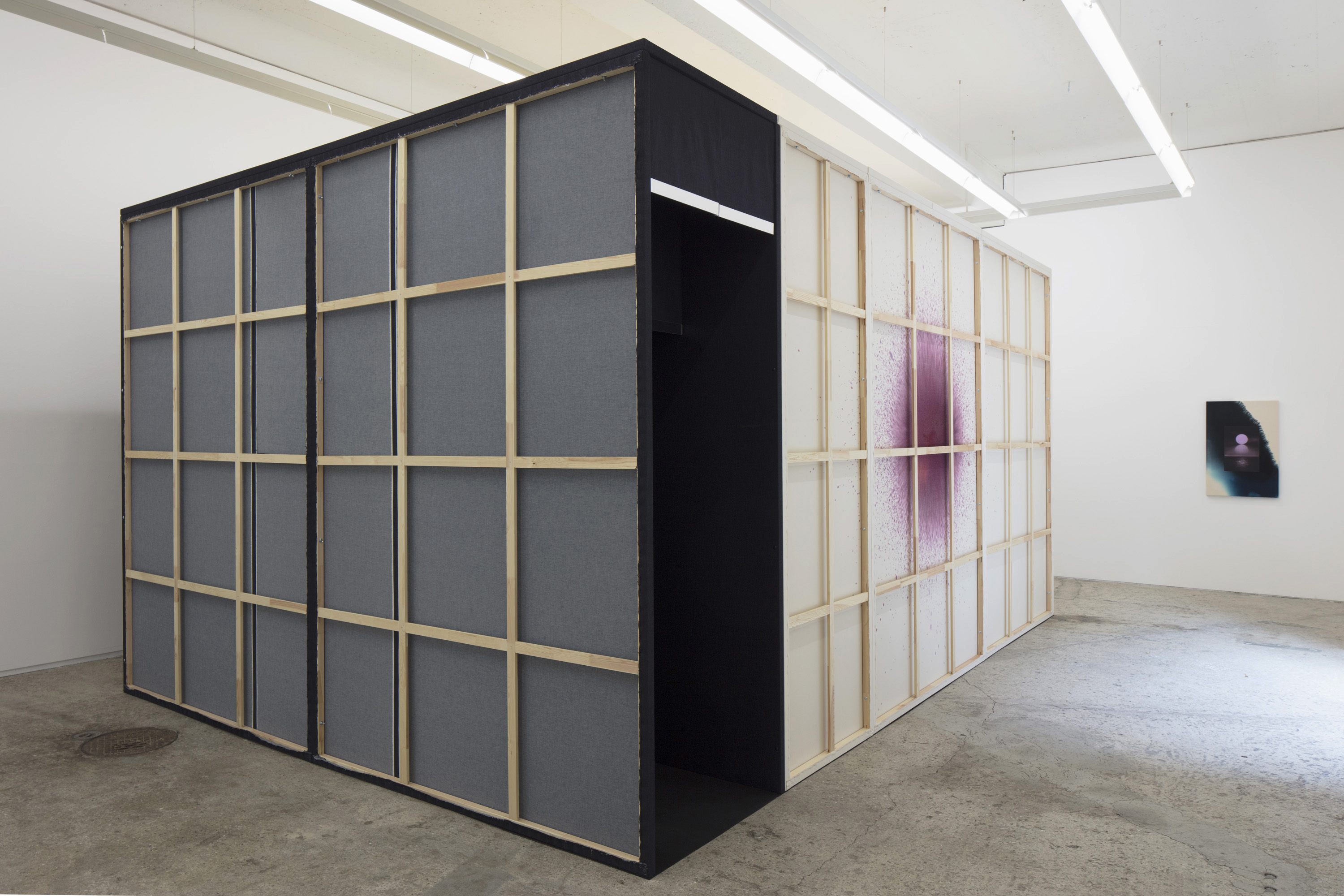
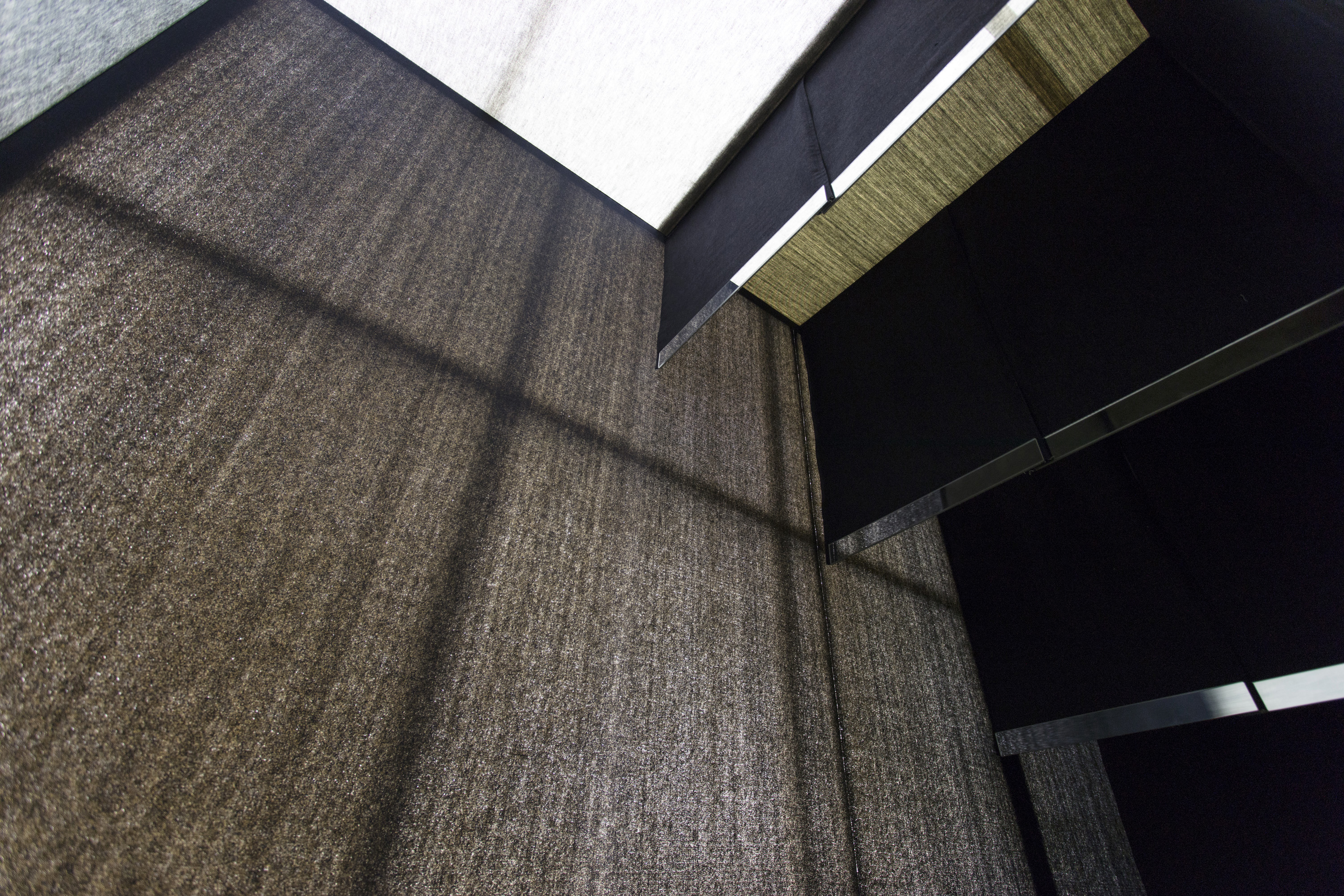
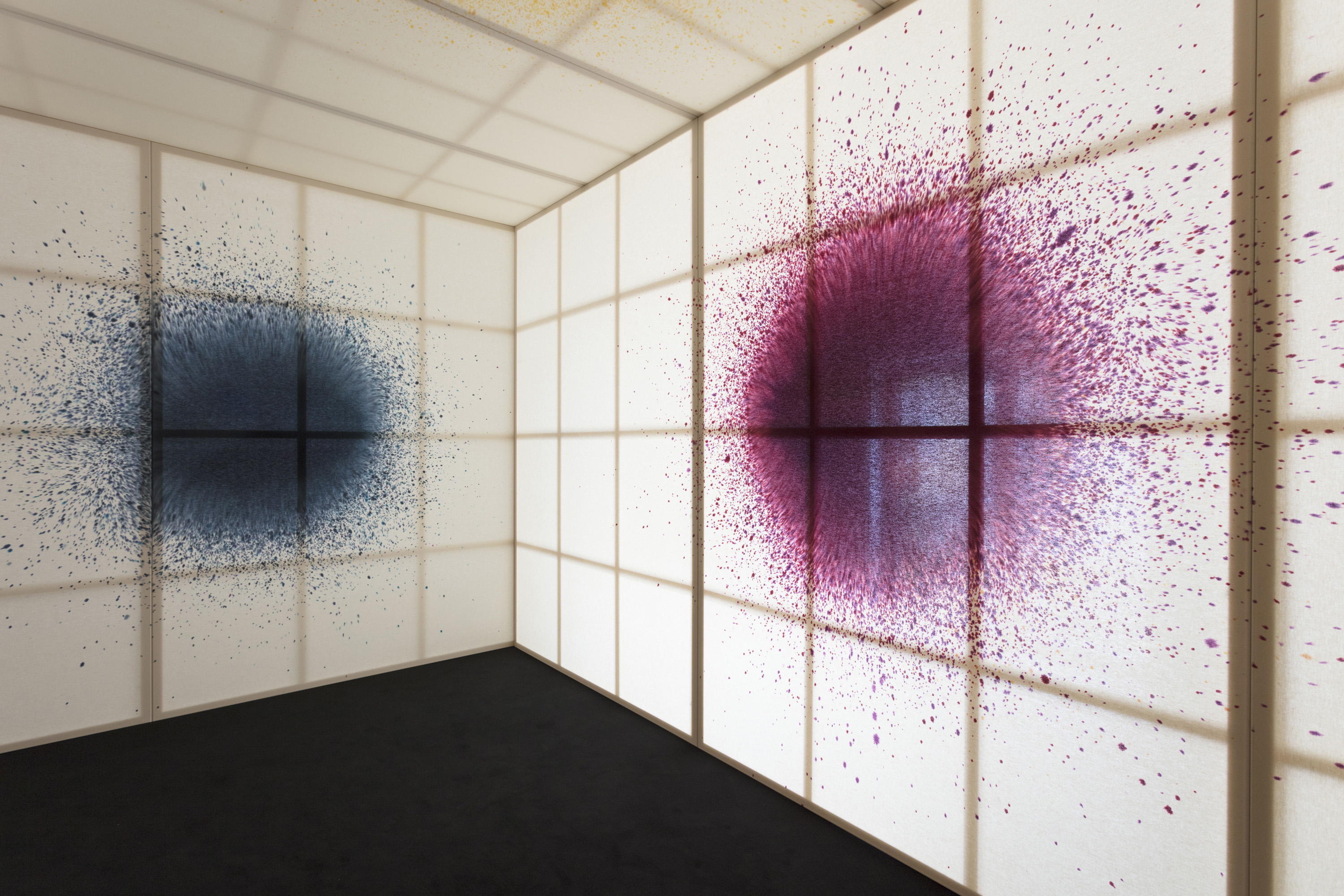
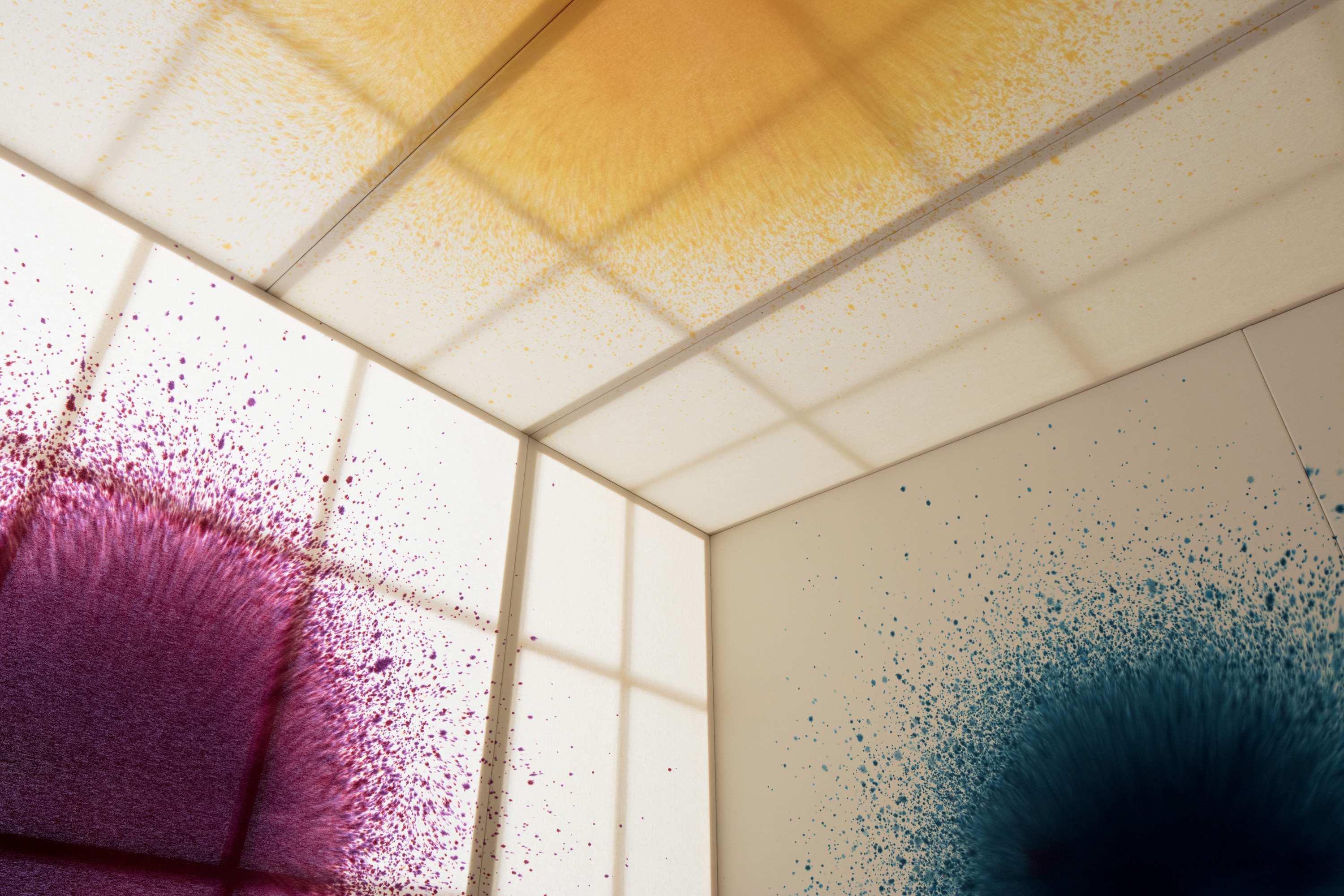
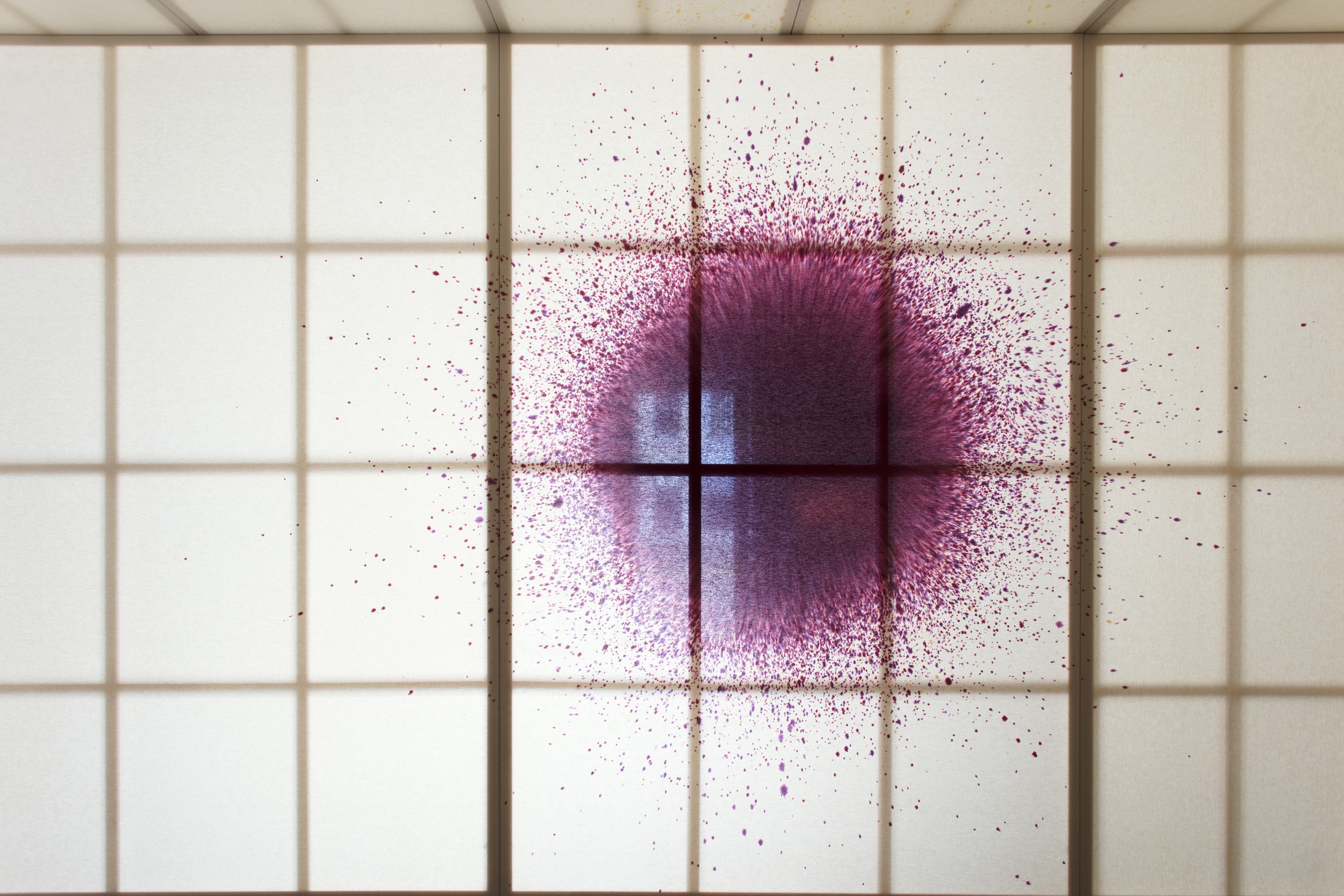
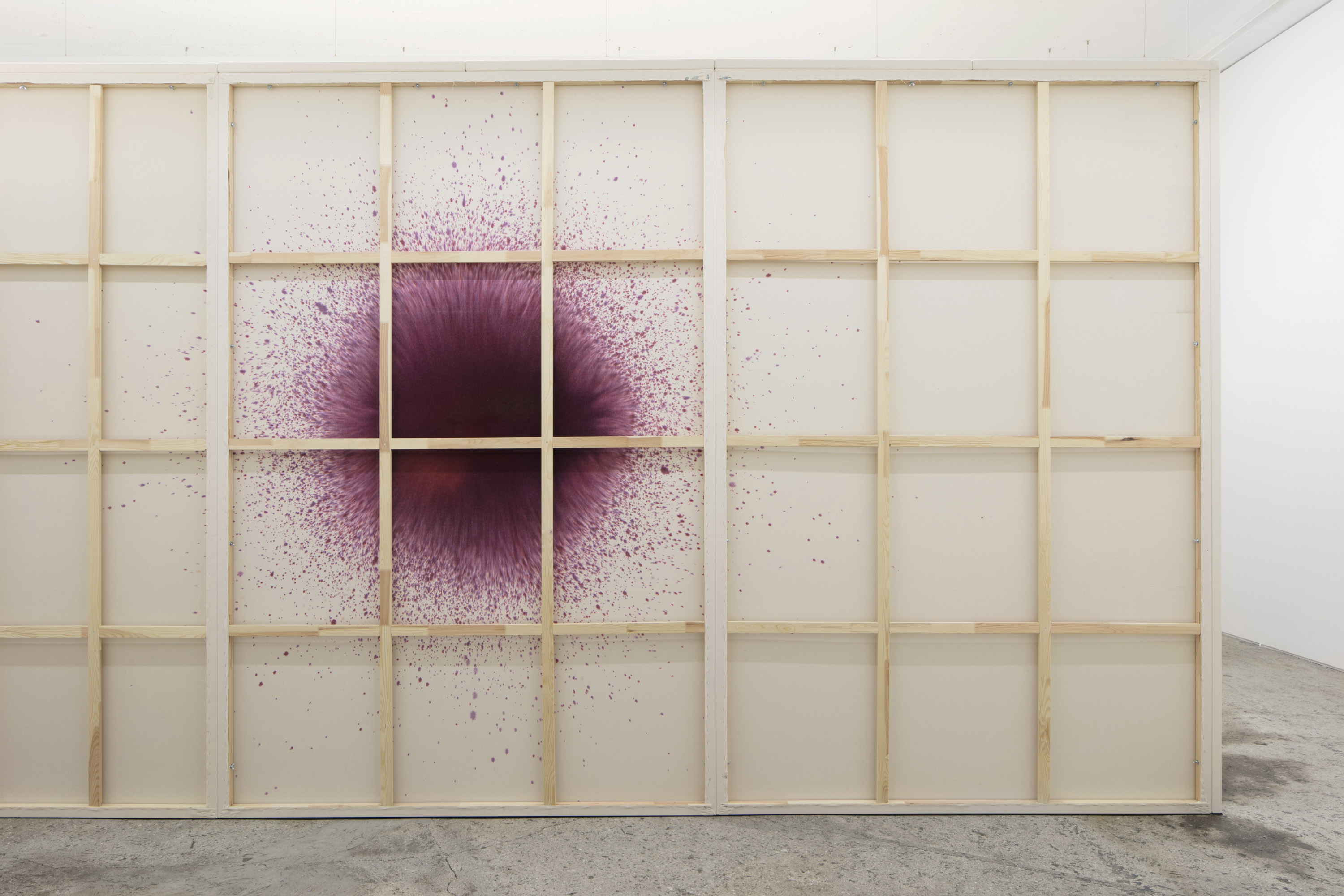
“Colour is a means of exercising direct influence upon the soul. Colour is the keyboard. The eye is the hammer, while the soul is a piano of many strings. The artist is the hand through which the medium of different ke-ys causes the human soul to vibrate.”
Wassily Kandinsky, ‘Concerning the Spiritual in Art’, 1912
In his essay ‘Concerning the Spiritual in Art’, Wassily Kandinsky analyses the relationship between colour and form and how their connection has the power to condition the human experience towards a painting. Imagining an encounter with something new, Kandinsky considers the experience to be rather superficial and surprising, like a child discovering its surroundings or when a finger touches an ice cube. Body and mind react upon the unknown experience as an immediate physical response towards a surprising input. Yet such an initial reaction remains superficial, “leaving no lasting impression in the human soul, which remains unaffected”. Then, as soon as the knowledge gets stored in the mind, the new turns into familiar, and the relationship with the “known” becomes one of indifference. Things seem unsurprising once we know them well, but if they become the focus of long-term attention, the relationship between the object and spectator might eventually make the soul vibrate and, ultimately, become spiritual.
As mentioned in the quote, colours and forms are the means through which the art of painting can reach the soul and make it vibrate. What Kandinsky calls the “forms of harmony”, they reflect in a corresponding vibration on the human soul by virtue of paying enough attention to them. Nowadays, however, in contrast to the time in which Kandinsky verbalised his thoughts, the spectator’s physical encounter with art is usually interrupted by other presences and the pervasive tendency to be connected with the rest of the world. Those constant interruptions distract from engaging more in depth with the present moment and the things surrounding us physically. The maximum our limited attention span can attempt to reach is the most superficial level of experiencing a painting, like touching ice with a finger, an instant flash; in the words of Kandinsky, a purely “physical effect”. But in the modern day, how can one
Wassily Kandinsky, ‘Concerning the Spiritual in Art’, 1912
In his essay ‘Concerning the Spiritual in Art’, Wassily Kandinsky analyses the relationship between colour and form and how their connection has the power to condition the human experience towards a painting. Imagining an encounter with something new, Kandinsky considers the experience to be rather superficial and surprising, like a child discovering its surroundings or when a finger touches an ice cube. Body and mind react upon the unknown experience as an immediate physical response towards a surprising input. Yet such an initial reaction remains superficial, “leaving no lasting impression in the human soul, which remains unaffected”. Then, as soon as the knowledge gets stored in the mind, the new turns into familiar, and the relationship with the “known” becomes one of indifference. Things seem unsurprising once we know them well, but if they become the focus of long-term attention, the relationship between the object and spectator might eventually make the soul vibrate and, ultimately, become spiritual.
As mentioned in the quote, colours and forms are the means through which the art of painting can reach the soul and make it vibrate. What Kandinsky calls the “forms of harmony”, they reflect in a corresponding vibration on the human soul by virtue of paying enough attention to them. Nowadays, however, in contrast to the time in which Kandinsky verbalised his thoughts, the spectator’s physical encounter with art is usually interrupted by other presences and the pervasive tendency to be connected with the rest of the world. Those constant interruptions distract from engaging more in depth with the present moment and the things surrounding us physically. The maximum our limited attention span can attempt to reach is the most superficial level of experiencing a painting, like touching ice with a finger, an instant flash; in the words of Kandinsky, a purely “physical effect”. But in the modern day, how can one
experience a work fully and escape the usual, pervasive distractions? How to amplify this physical effect, or deepen the quality of an encounter? In a world in which narratives are meant to tick all the boxes in seconds, how to achieve a long lasting soul vibration?
In Giacomo Santiago Rogado’s conception of «Growing together through emotions over time», the spectator is meant to penetrate the site-specific installation and engage with the work individually. The paintings comprising the show are also at the same time the structure to be penetrated and experienced. Form and colour are put in relation firstly in the paintings and secondly in the installation. All the conditions are meant to abstract the viewer from external distractions and help to trigger full engagement with the paintings; to create a space for nothing but experiencing the works. When looking at them longer and closer, Rogado’s paintings might transport the viewer to another destination, as they might remind us of images from galaxies and other outer-spatial phenomena. The sophisticated processes of their creation suggest delicacy and a certain slow paced phenomenological violence.
Form and colour are related and they influence one another. Furthermore, form contains what Kandinsky calls an “inner harmony”. Shapes such as triangles or circles entail their own inner harmony, which suggests certain feelings. In the case of Rogado, the splash-like forms could remind us of something foreign but known at the same time, which might help to wander and imagine something that is unseen at least in that very moment and space. An imagination used to filling gaps, to deduct how a colour and form that is absent would feel and look, is – as Merleau-Ponty claimed– a “spiritual imagination”.
The spiritual might therefore exist in other ways, besides in religious doctrines and esoteric practices. Its existence might rather be based on engagement, and close, deep, true observation. The forms in Rogado’s paintings invite us to experience and engage, whereas their colours might trigger the imagination and all together play some of the soul strings. If we could just imagine a spirituality like a humble and honest emotion that can be awakened through long and deep contemplation...
Gabriela Acha
In Giacomo Santiago Rogado’s conception of «Growing together through emotions over time», the spectator is meant to penetrate the site-specific installation and engage with the work individually. The paintings comprising the show are also at the same time the structure to be penetrated and experienced. Form and colour are put in relation firstly in the paintings and secondly in the installation. All the conditions are meant to abstract the viewer from external distractions and help to trigger full engagement with the paintings; to create a space for nothing but experiencing the works. When looking at them longer and closer, Rogado’s paintings might transport the viewer to another destination, as they might remind us of images from galaxies and other outer-spatial phenomena. The sophisticated processes of their creation suggest delicacy and a certain slow paced phenomenological violence.
Form and colour are related and they influence one another. Furthermore, form contains what Kandinsky calls an “inner harmony”. Shapes such as triangles or circles entail their own inner harmony, which suggests certain feelings. In the case of Rogado, the splash-like forms could remind us of something foreign but known at the same time, which might help to wander and imagine something that is unseen at least in that very moment and space. An imagination used to filling gaps, to deduct how a colour and form that is absent would feel and look, is – as Merleau-Ponty claimed– a “spiritual imagination”.
The spiritual might therefore exist in other ways, besides in religious doctrines and esoteric practices. Its existence might rather be based on engagement, and close, deep, true observation. The forms in Rogado’s paintings invite us to experience and engage, whereas their colours might trigger the imagination and all together play some of the soul strings. If we could just imagine a spirituality like a humble and honest emotion that can be awakened through long and deep contemplation...
Gabriela Acha